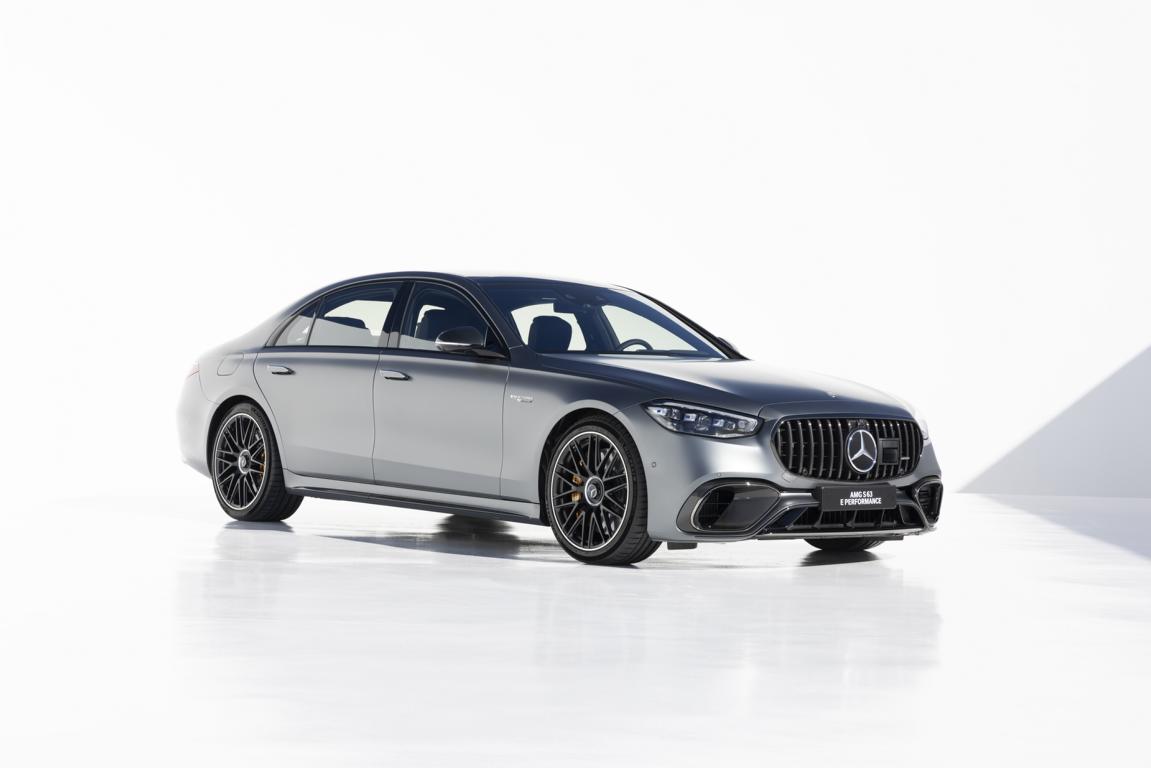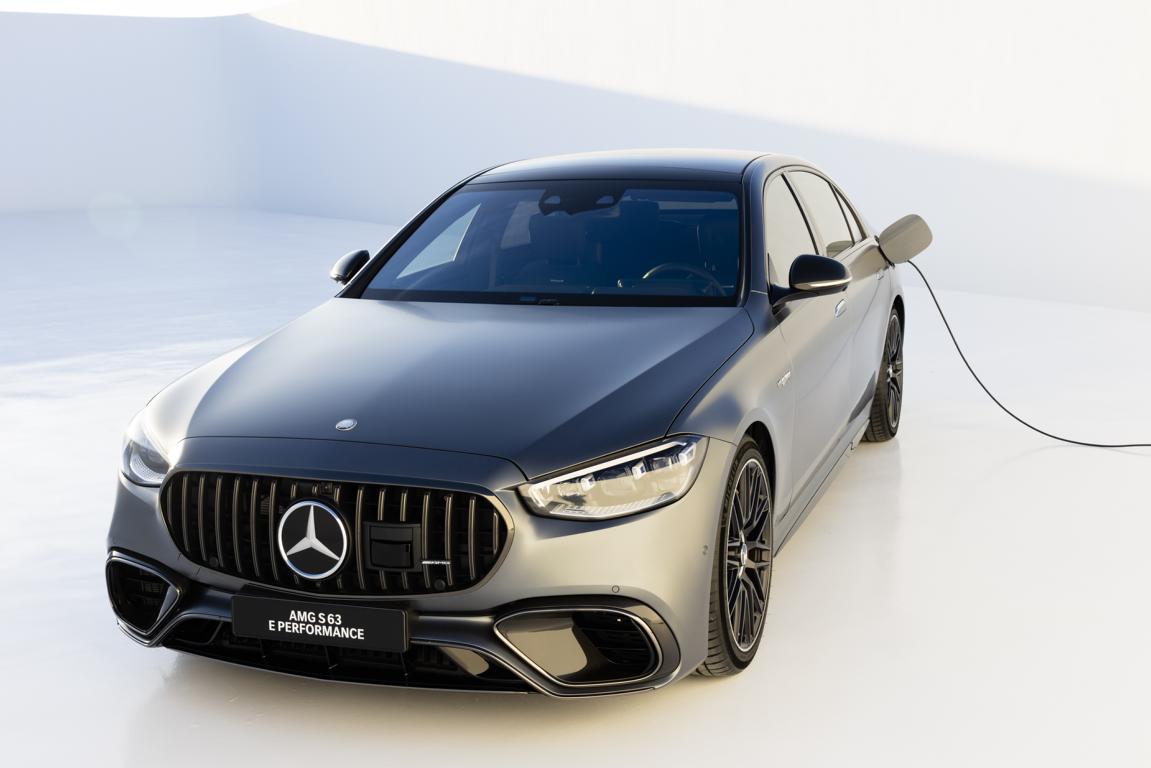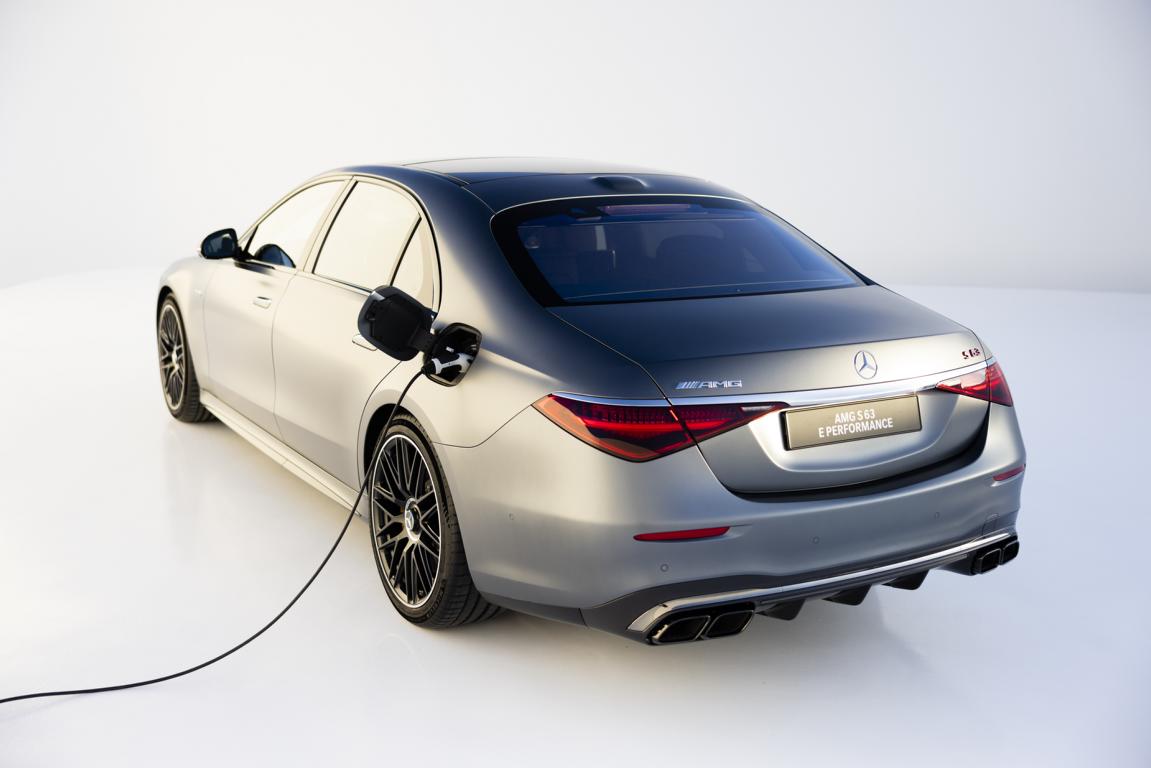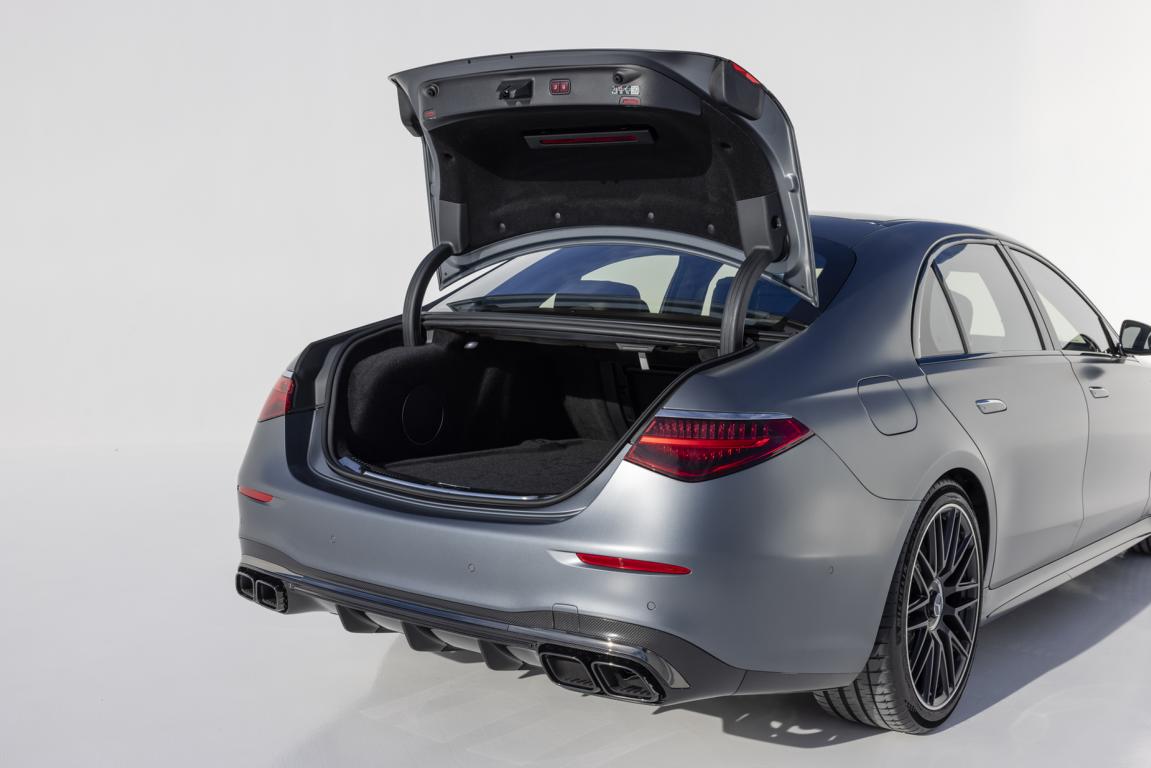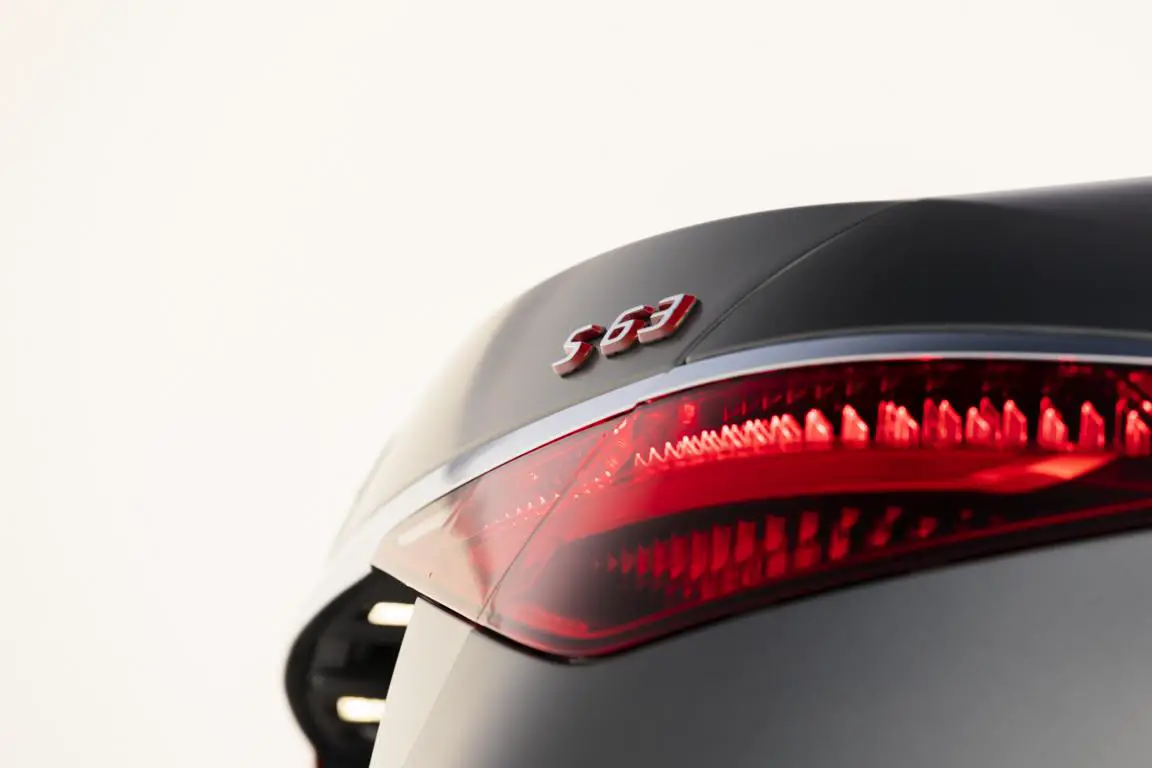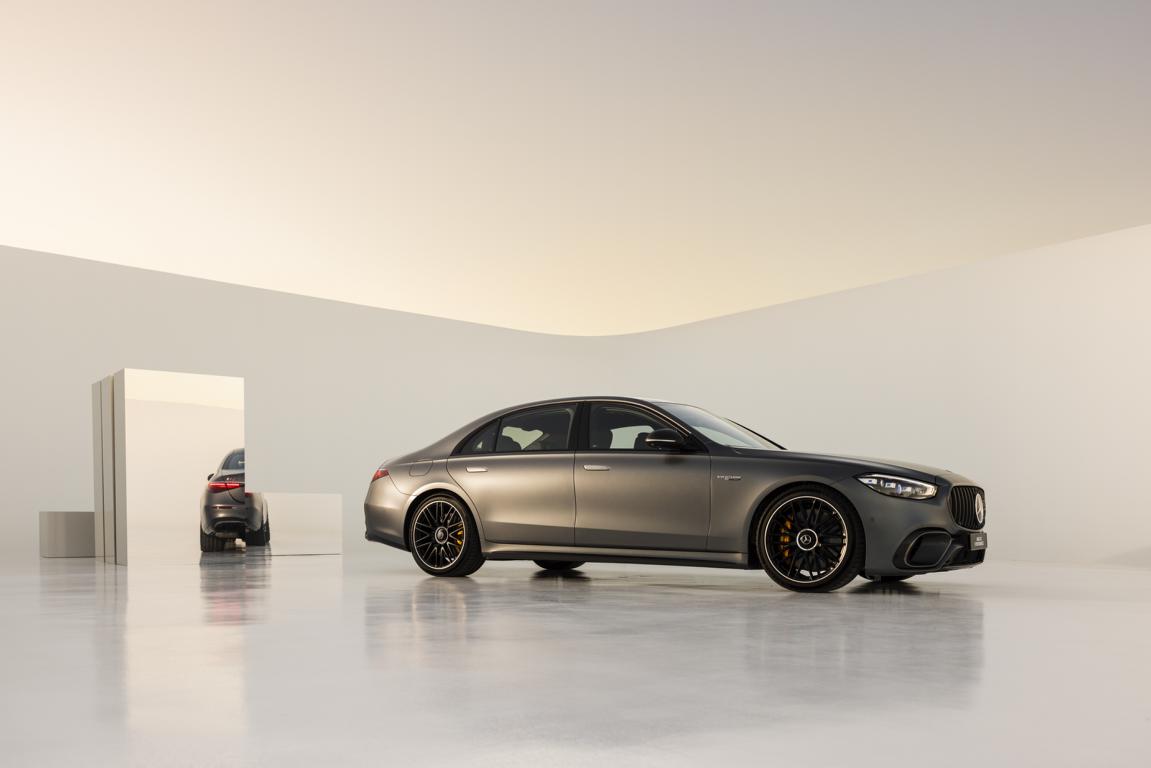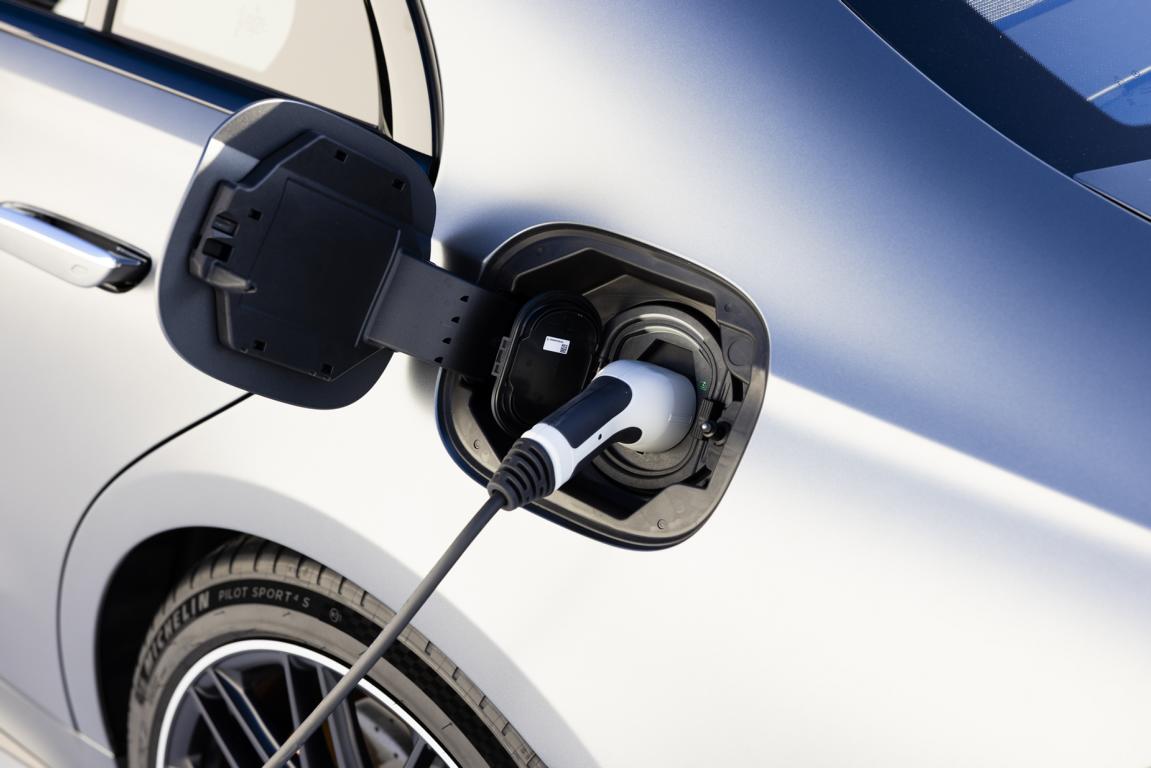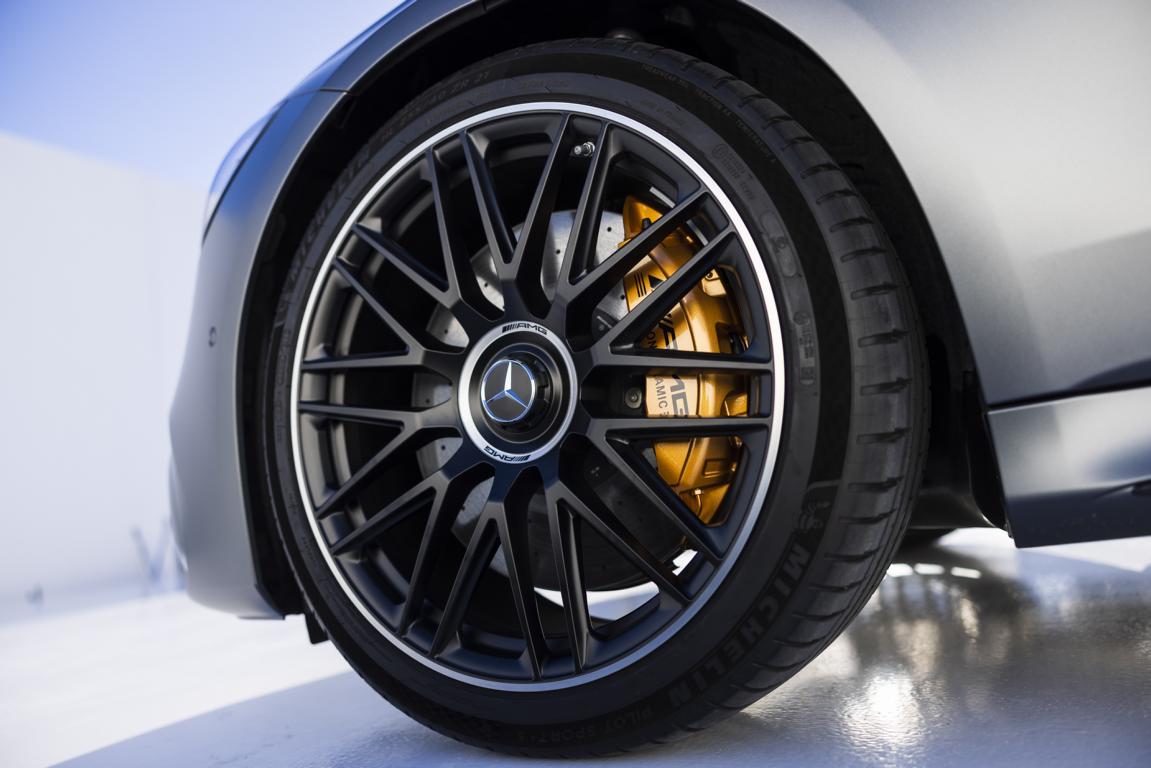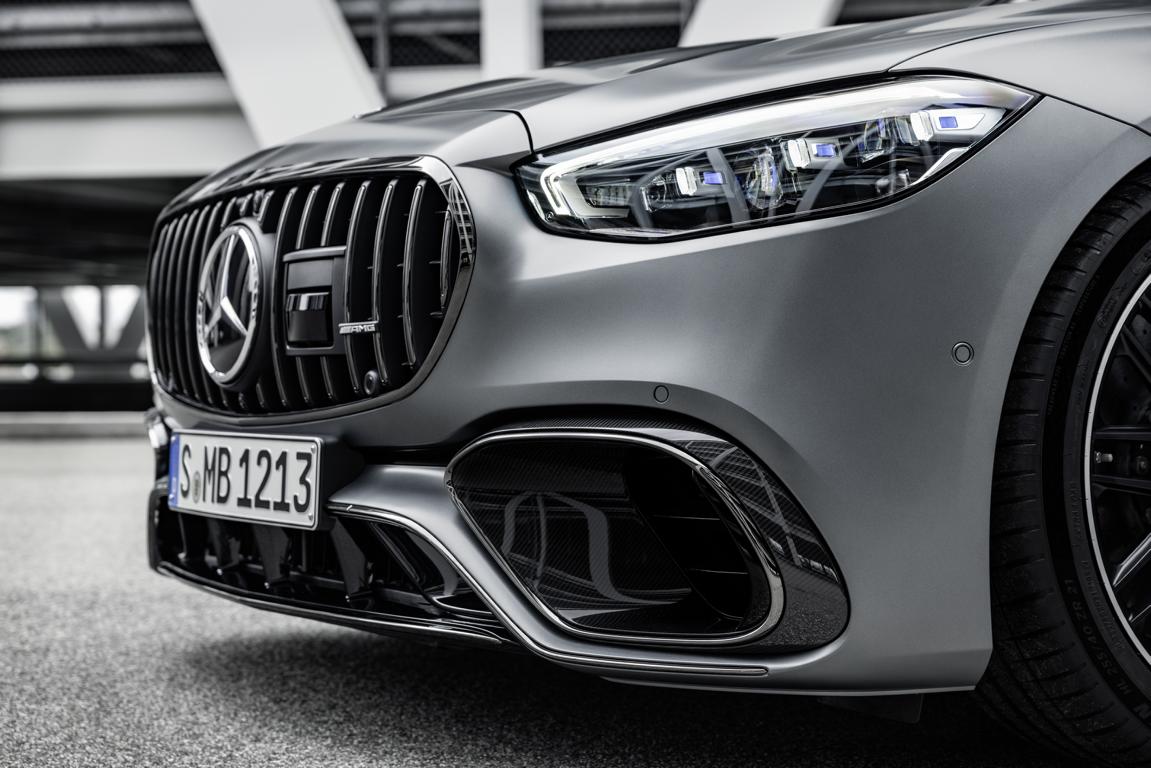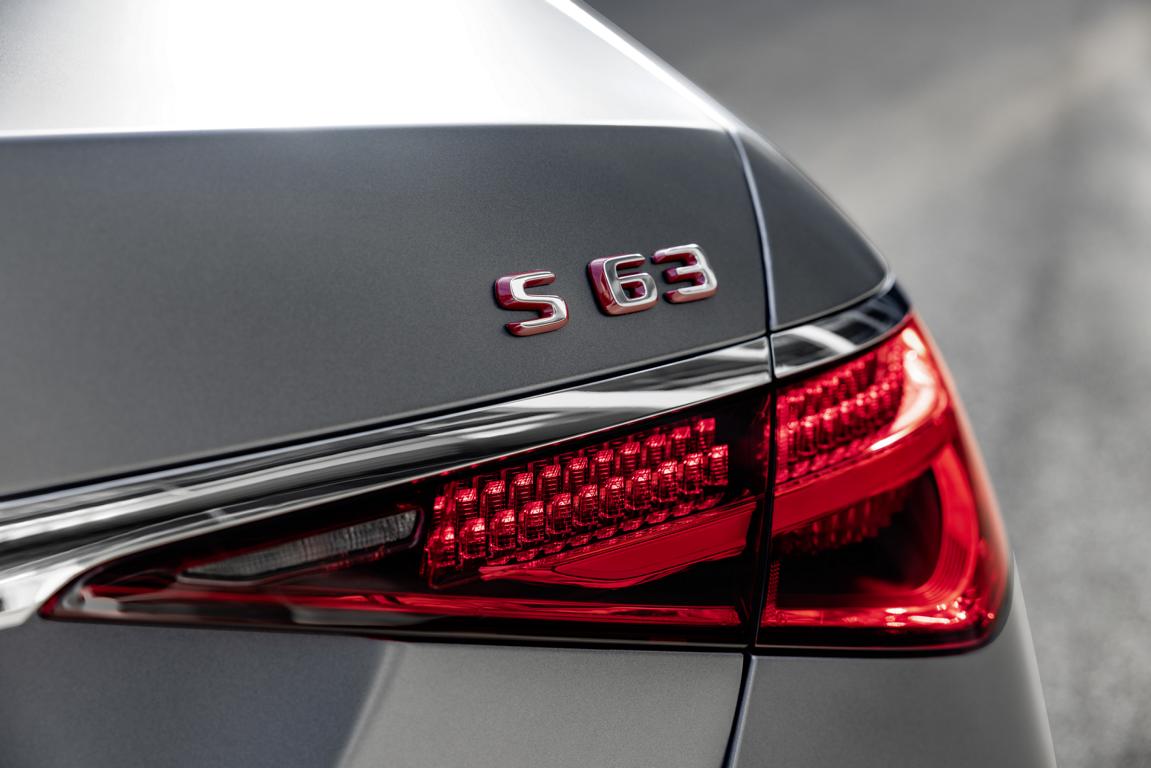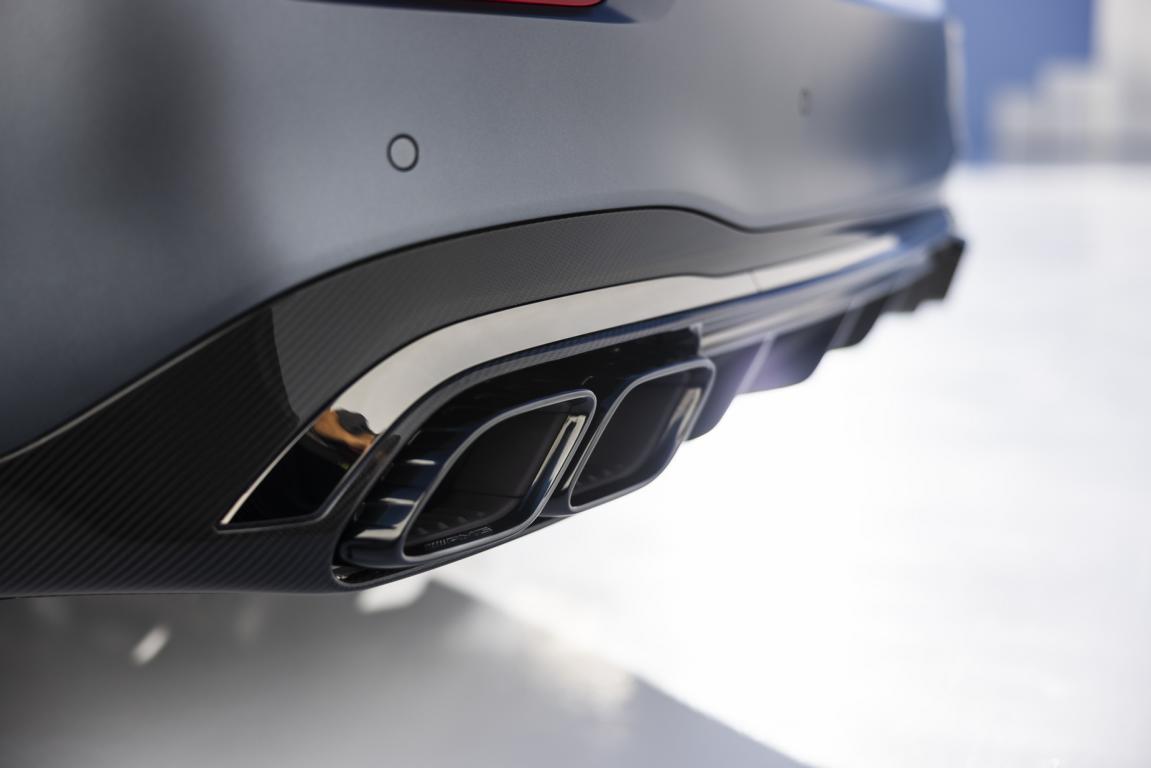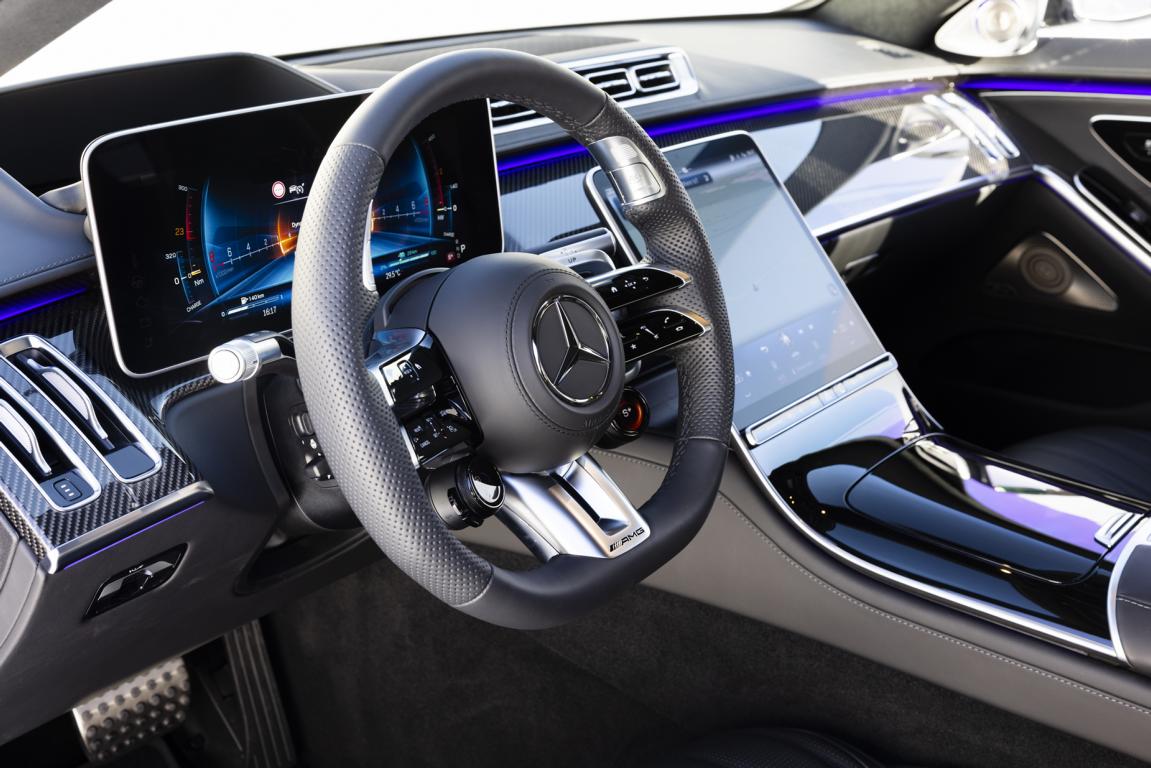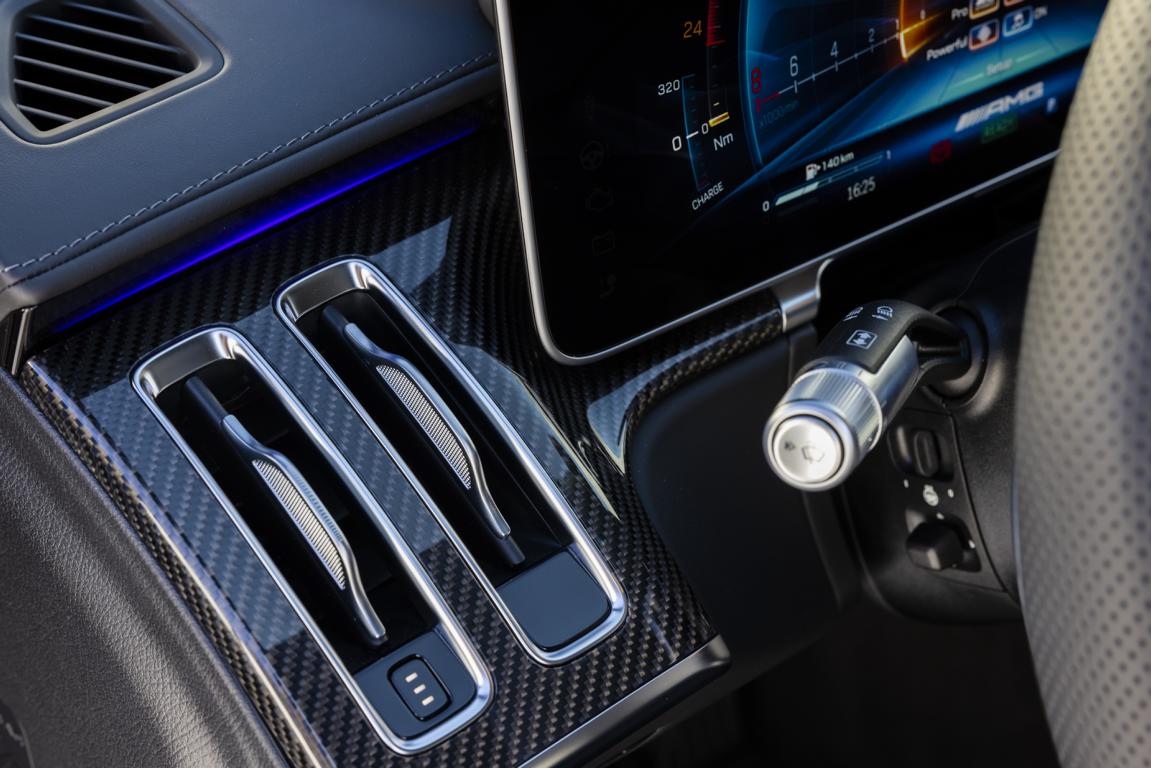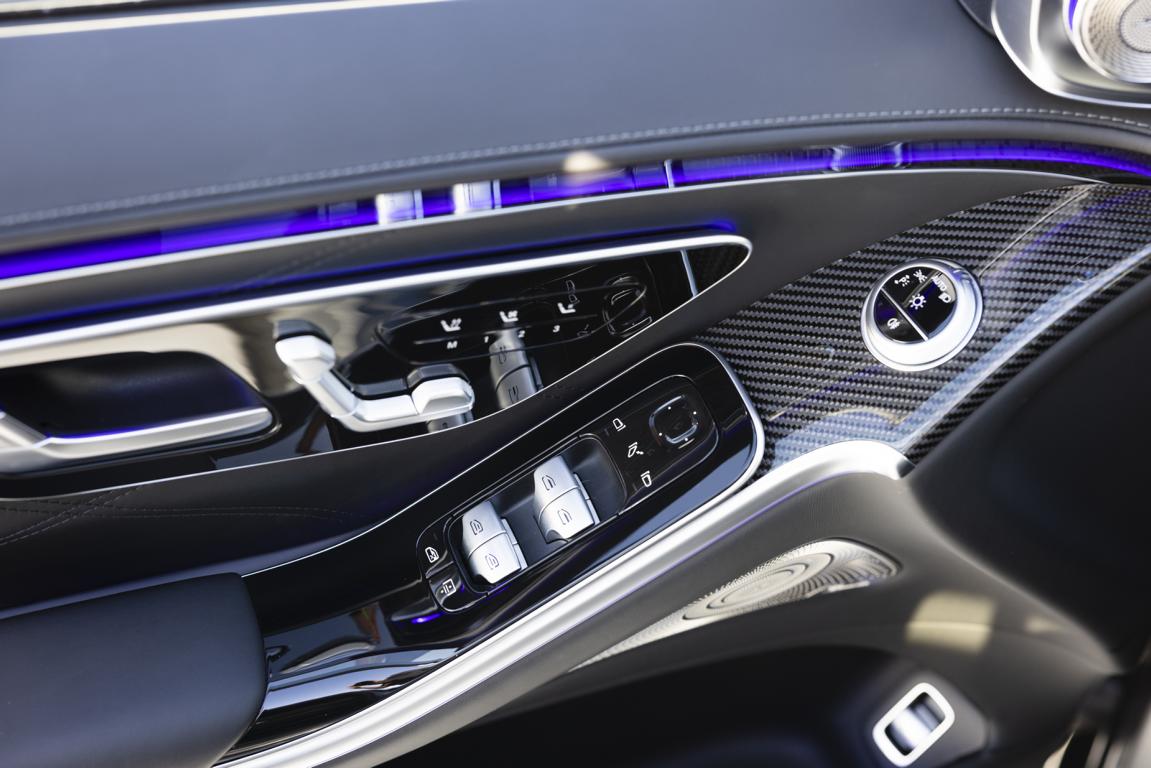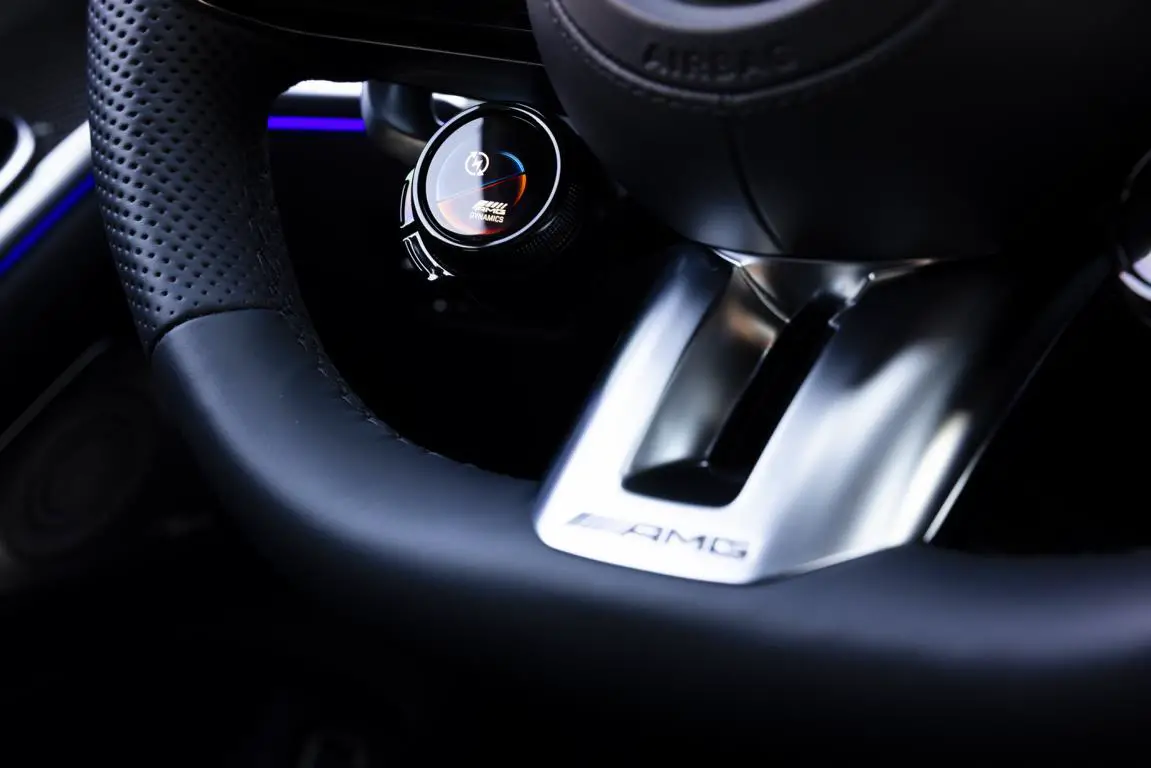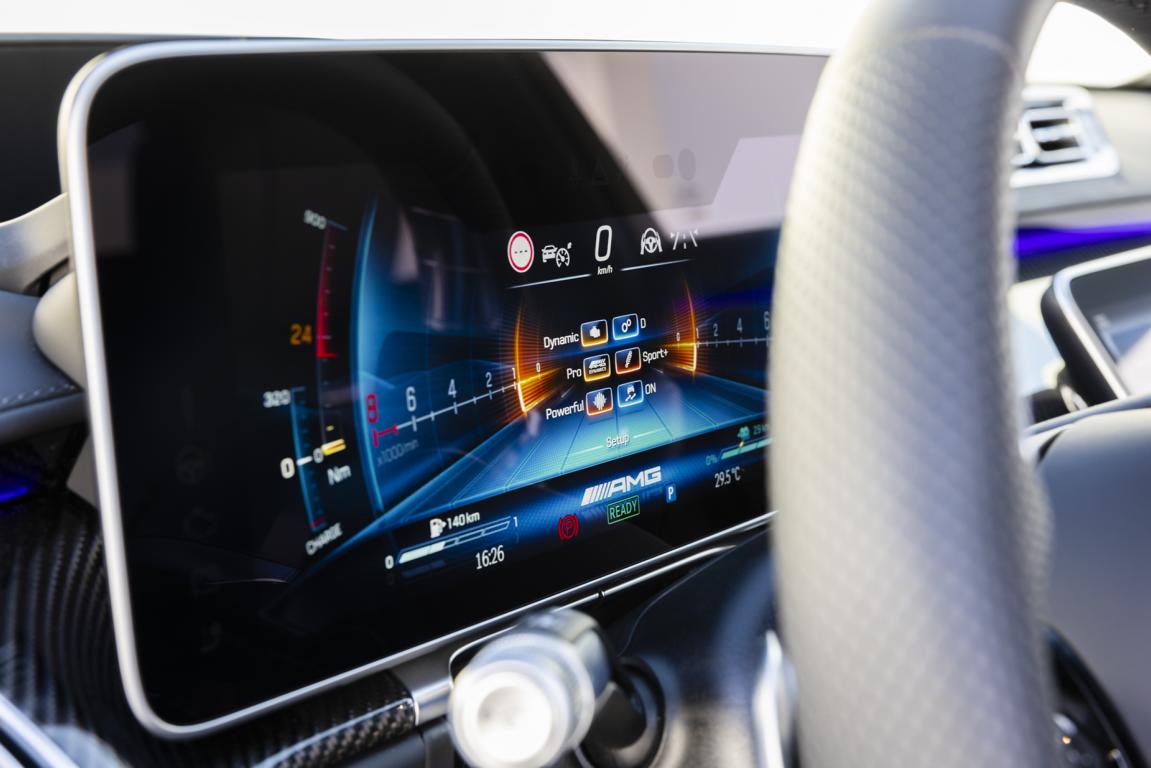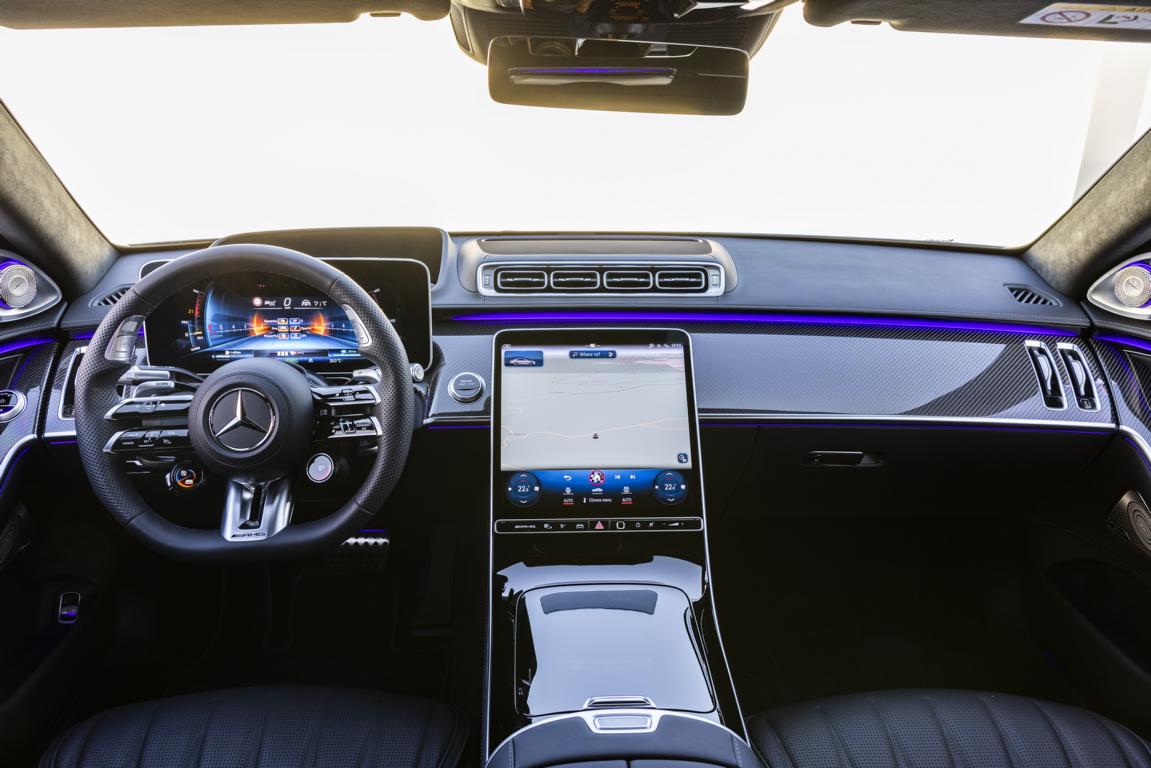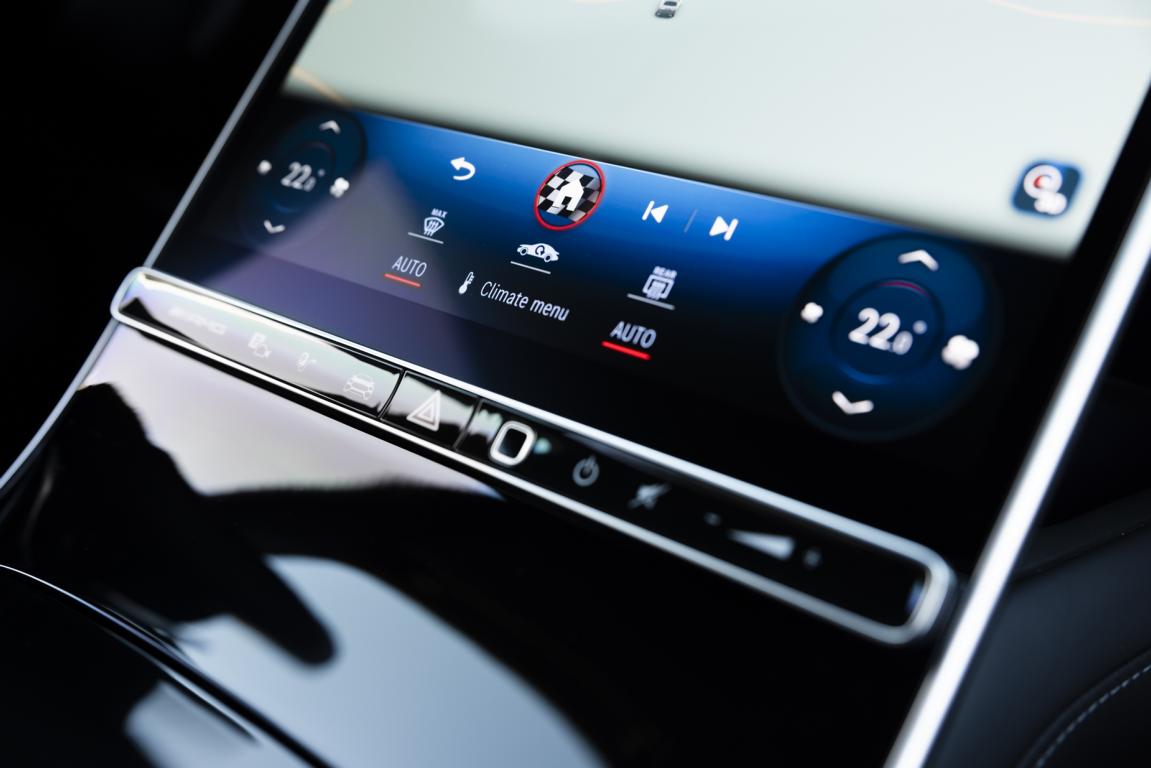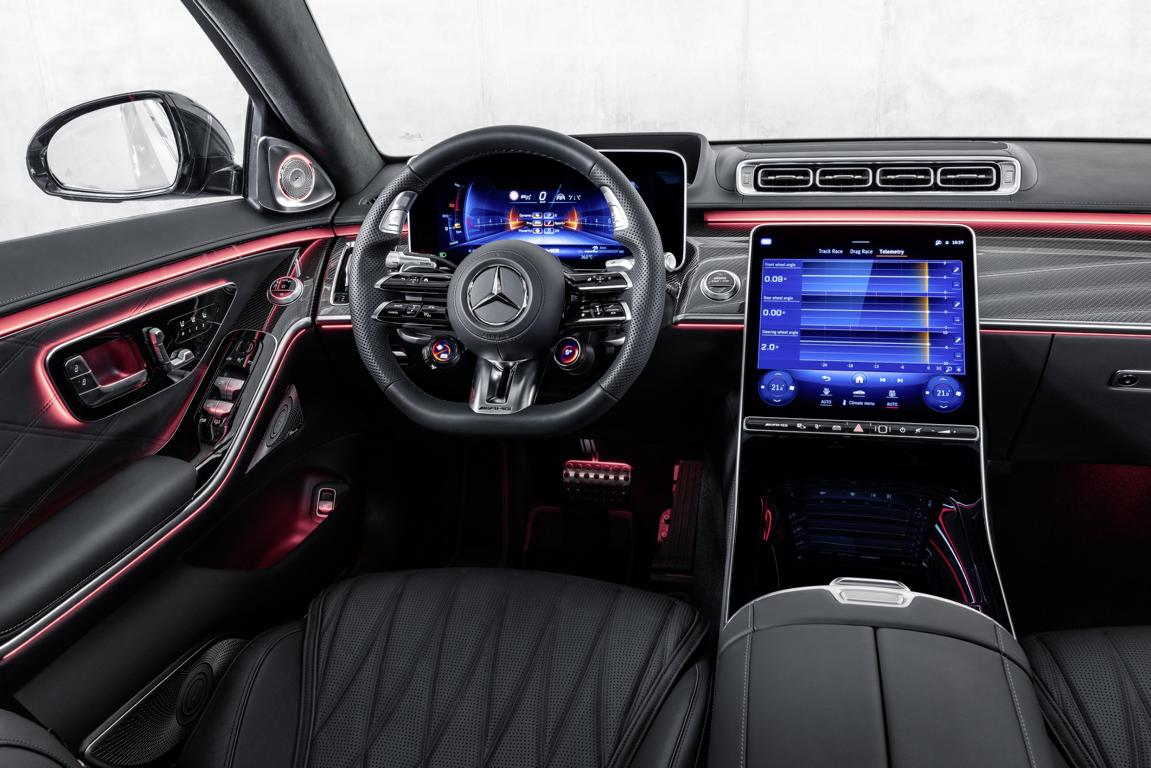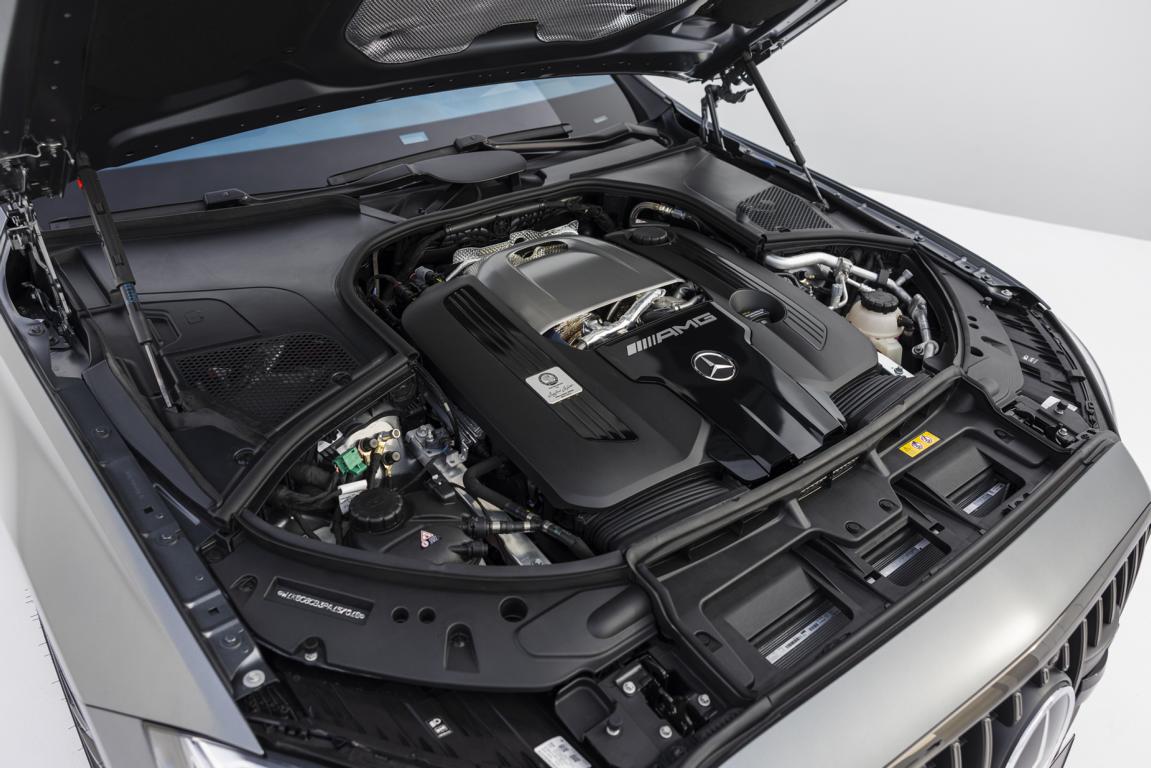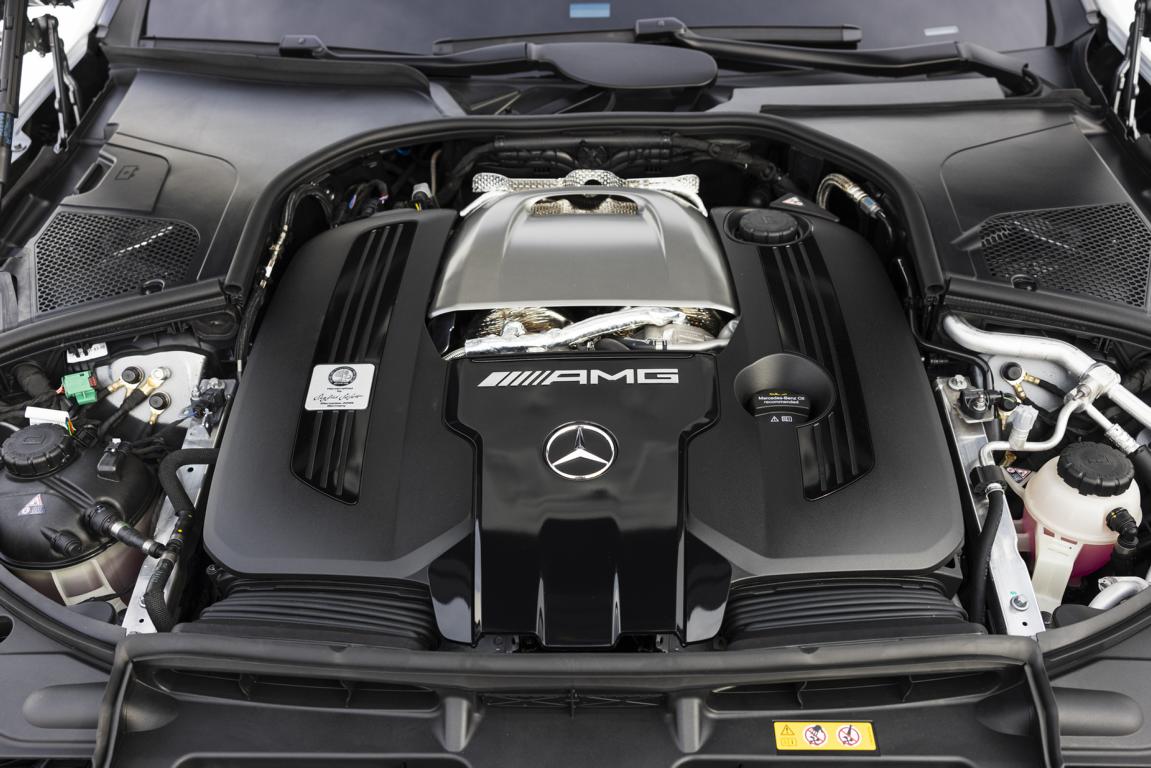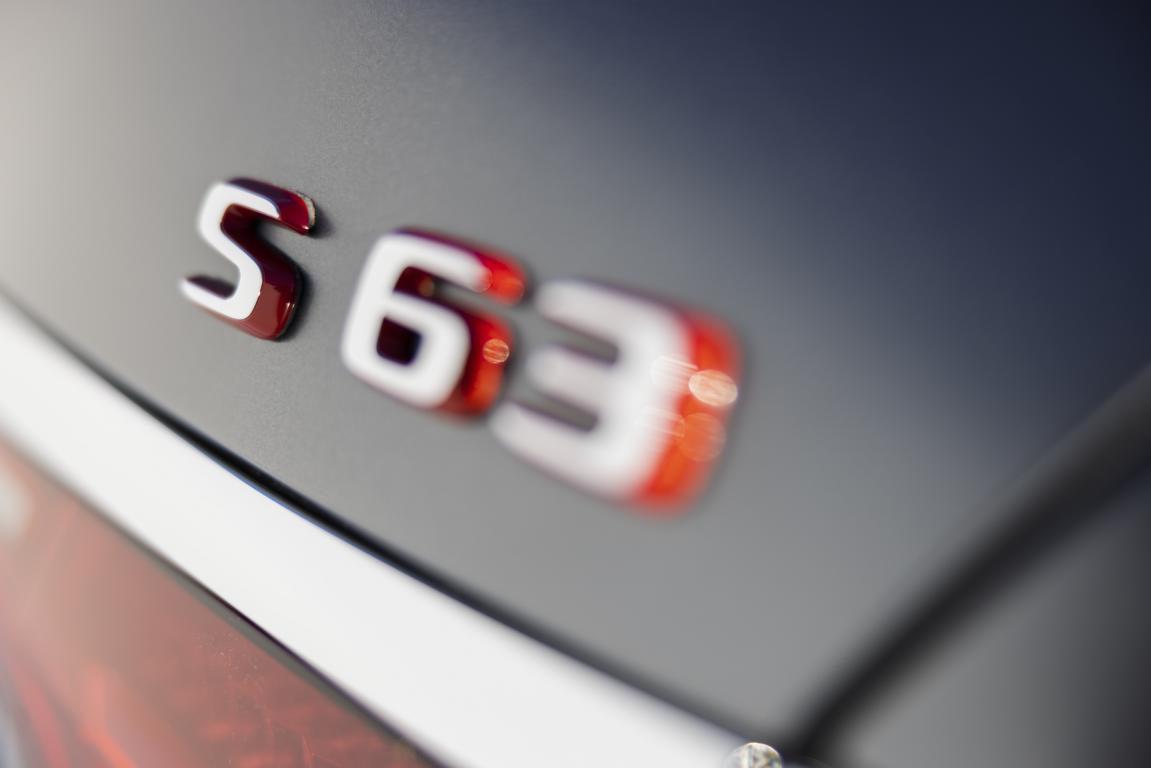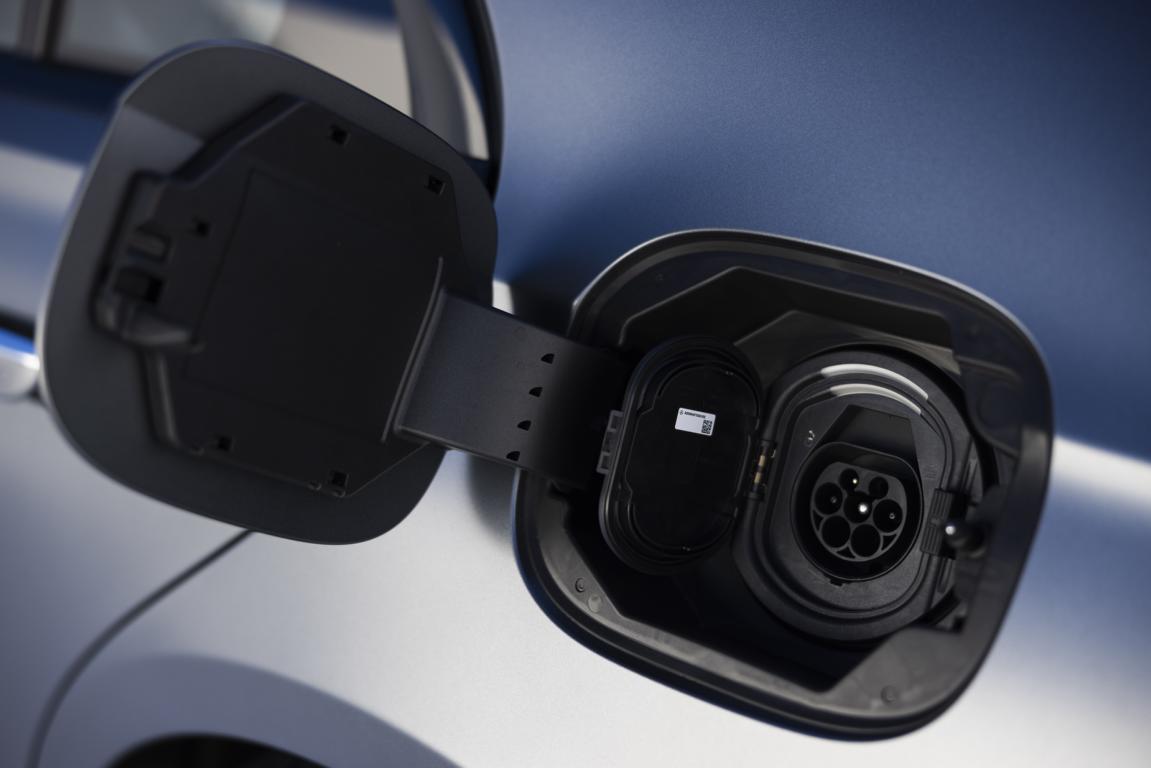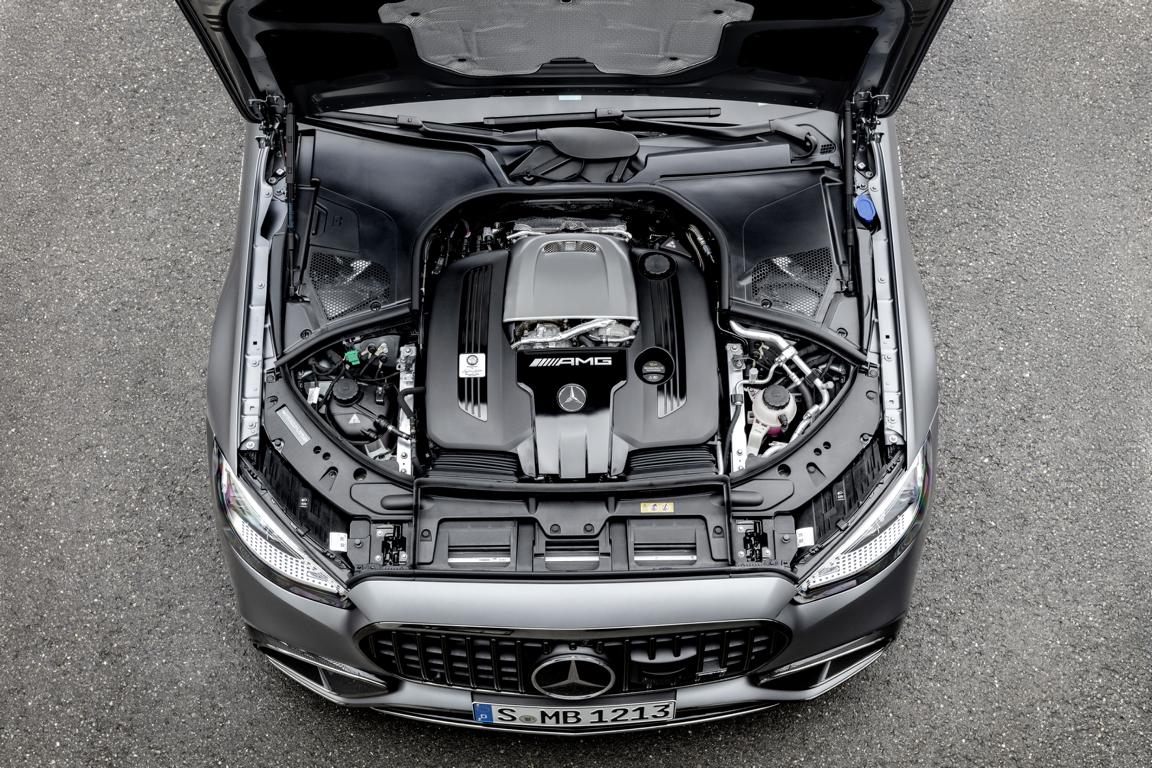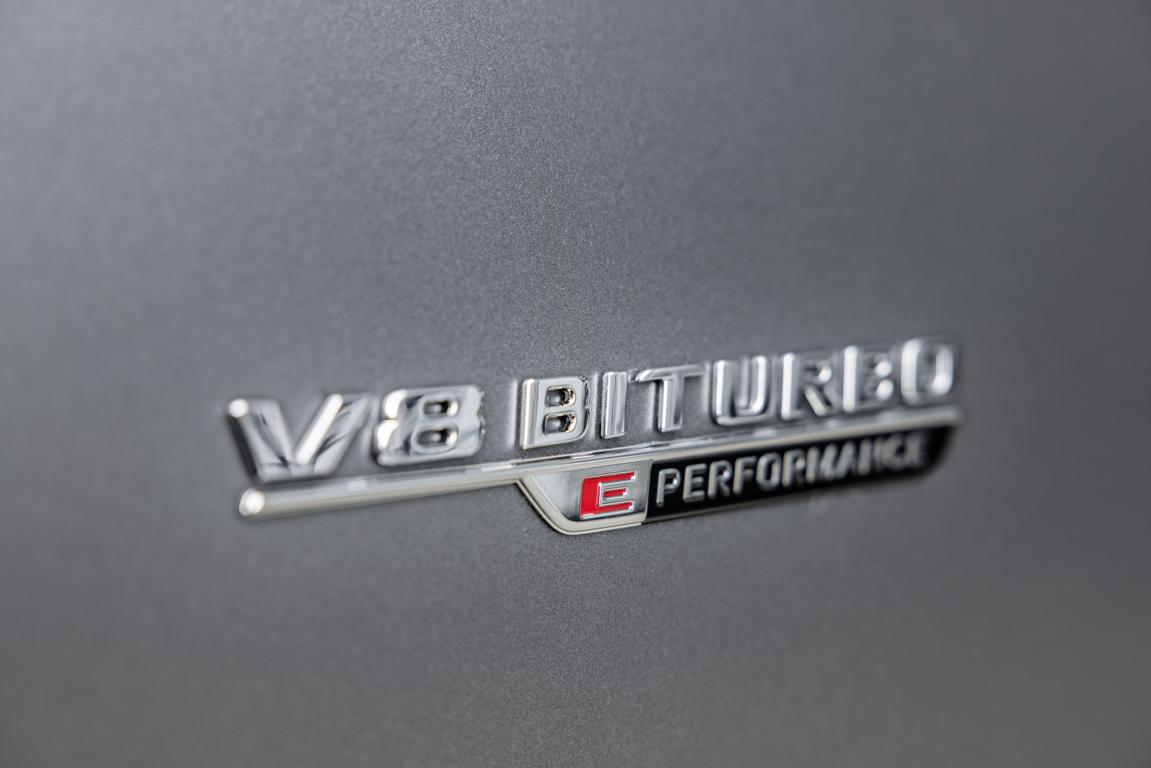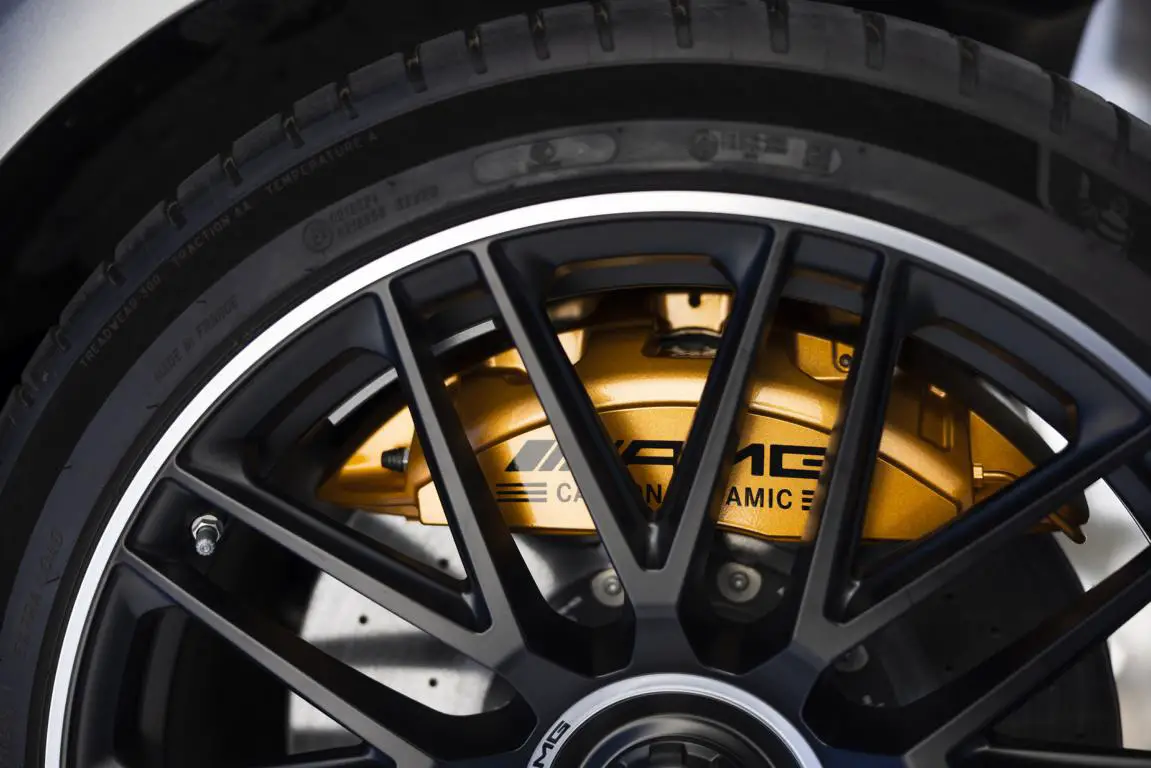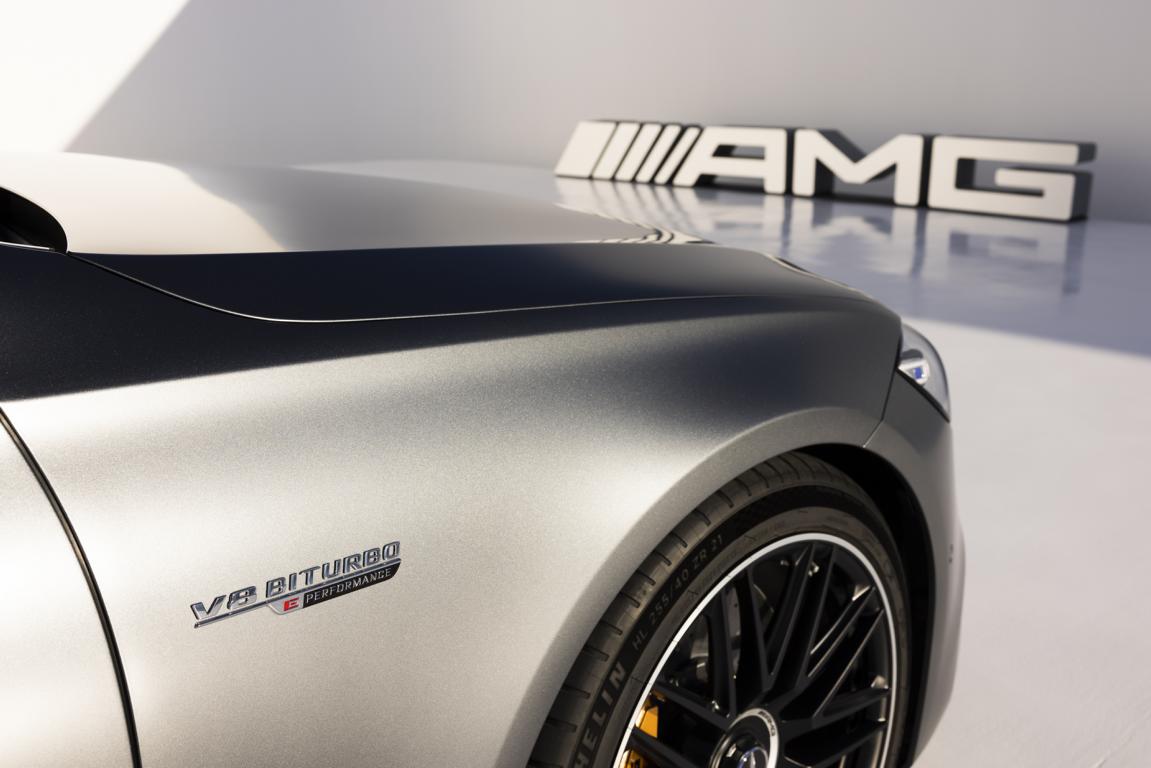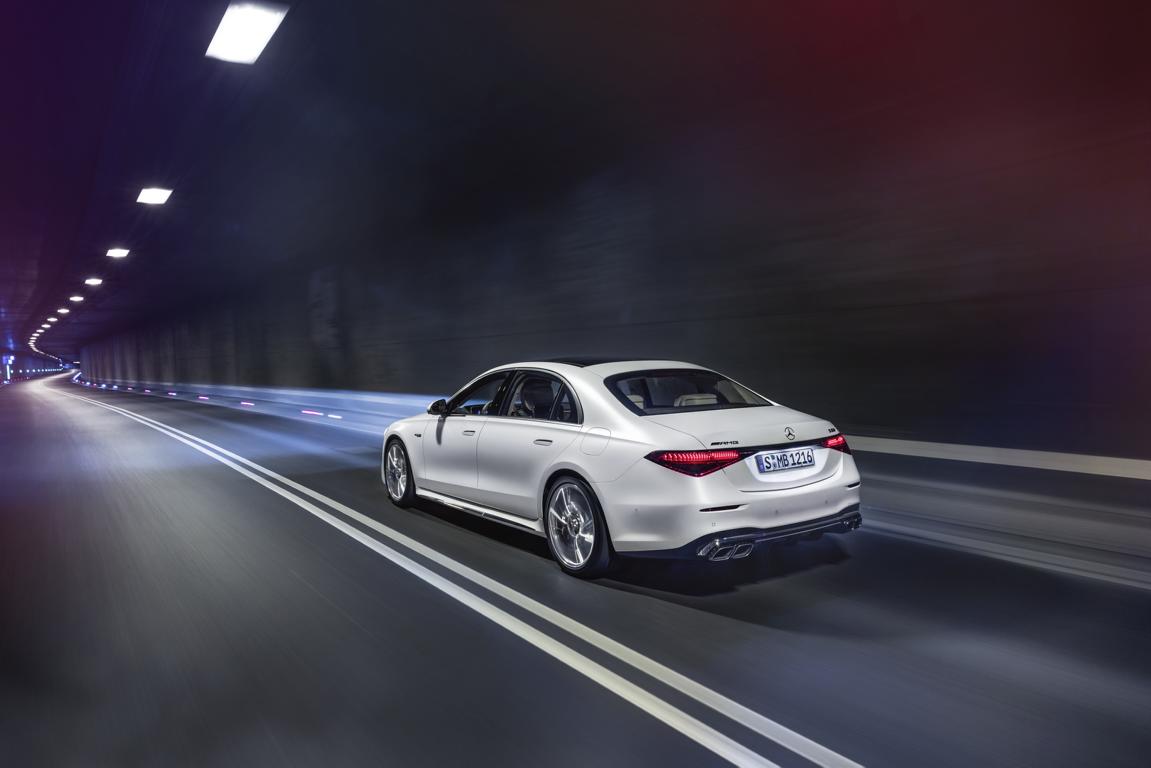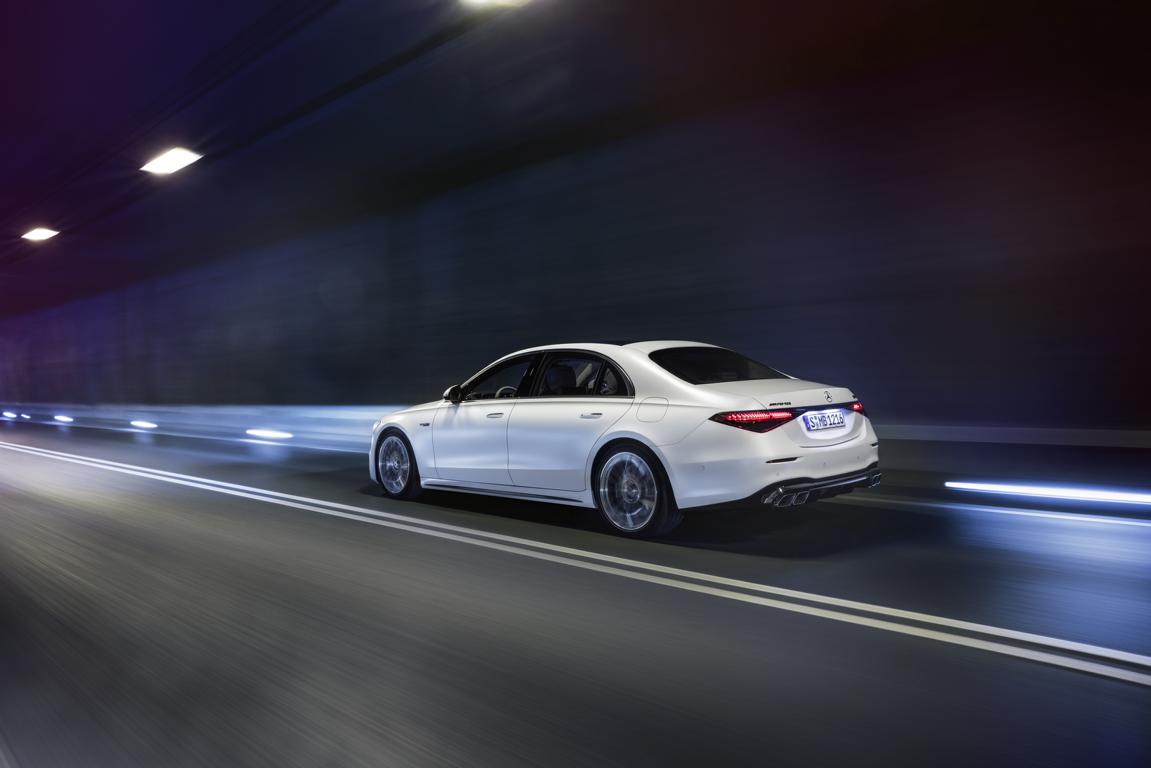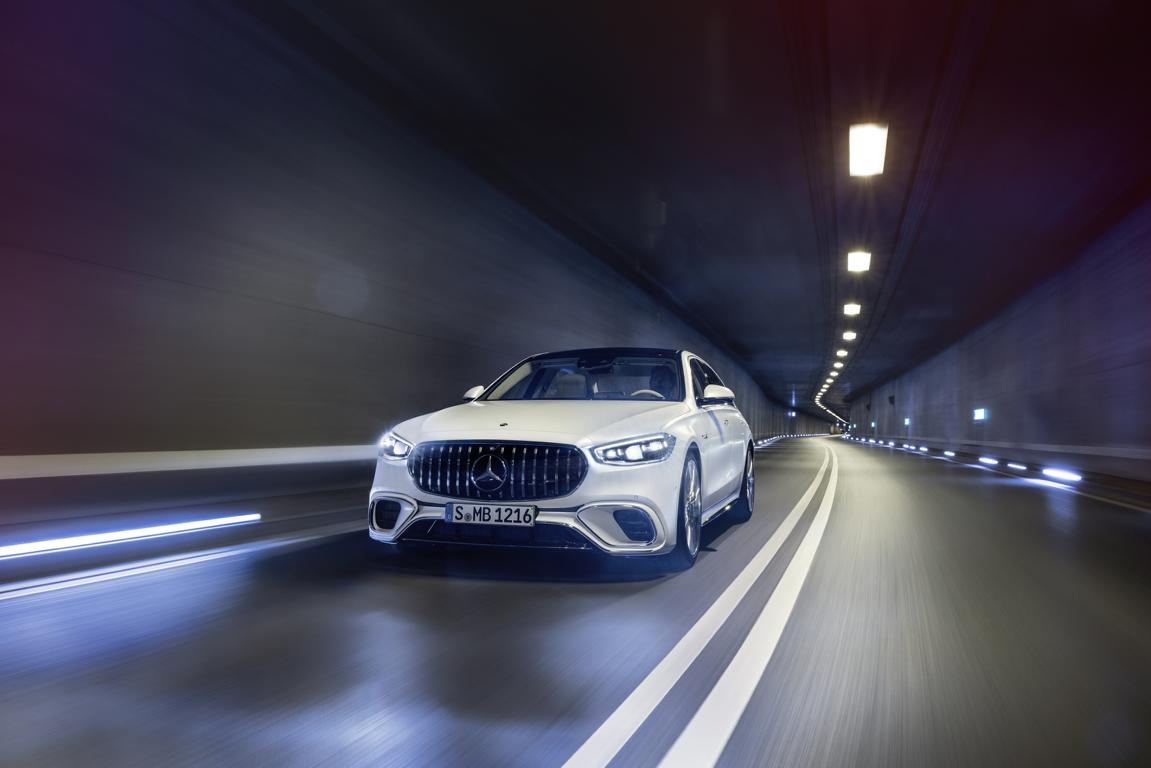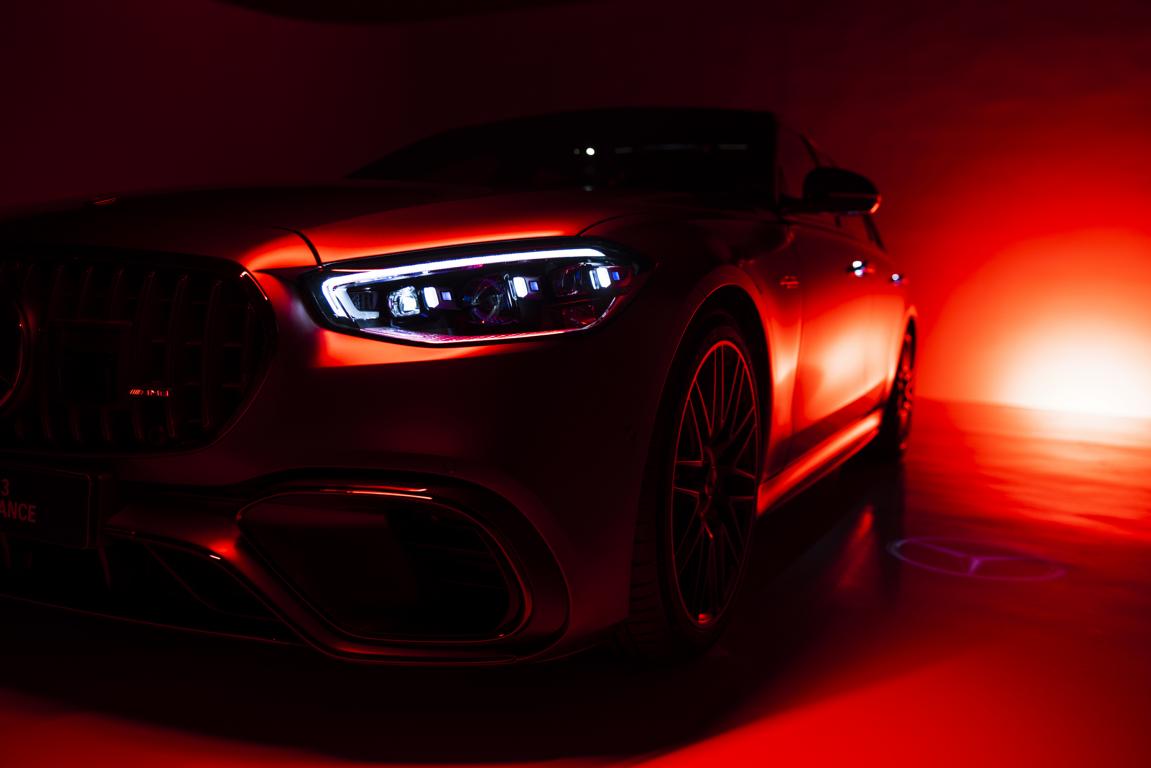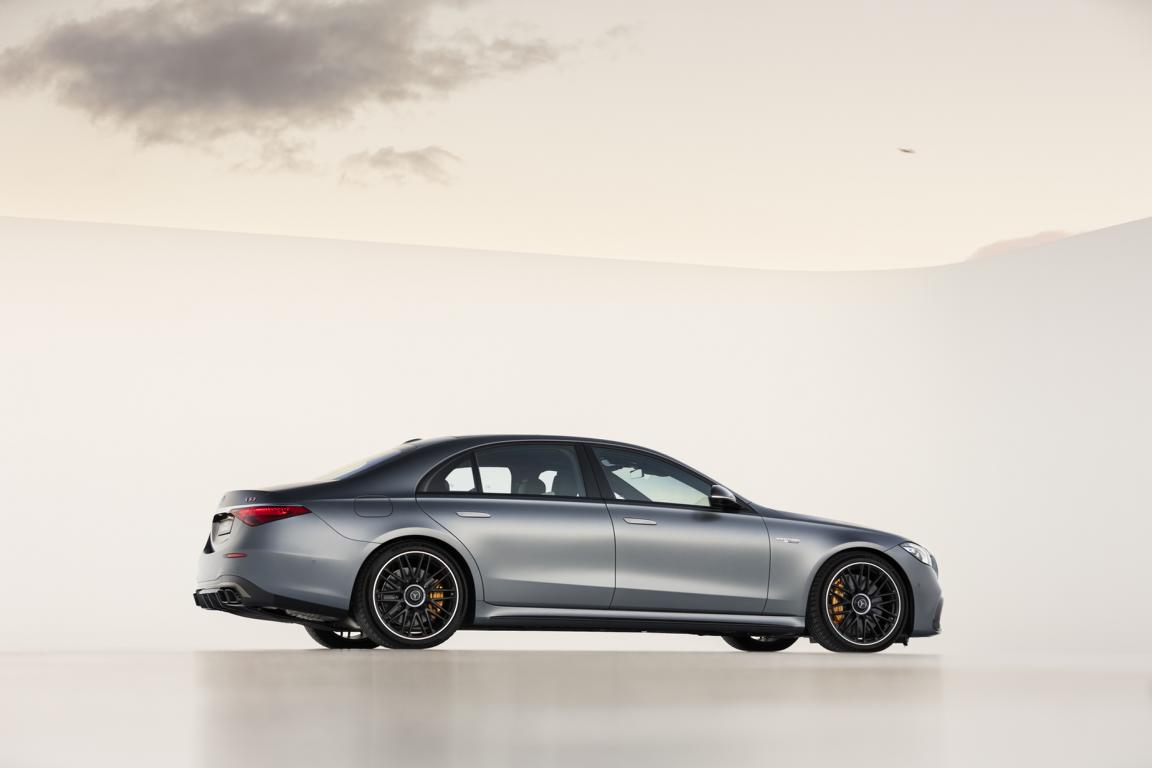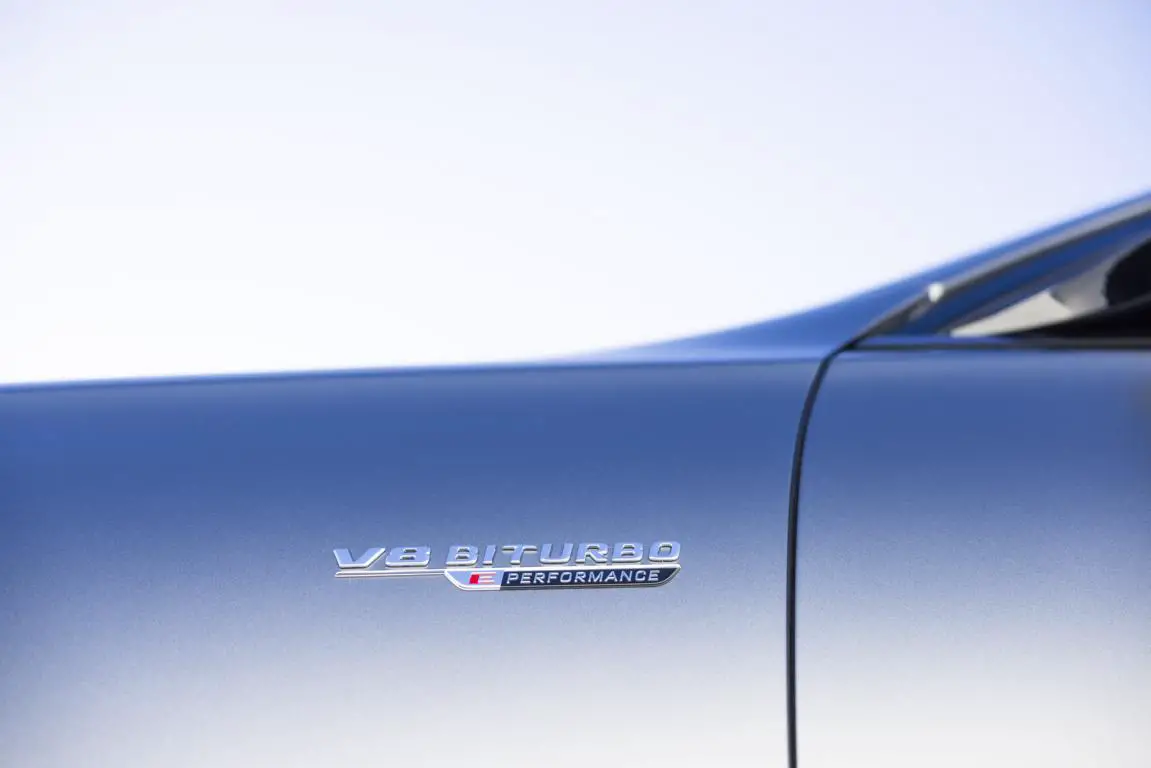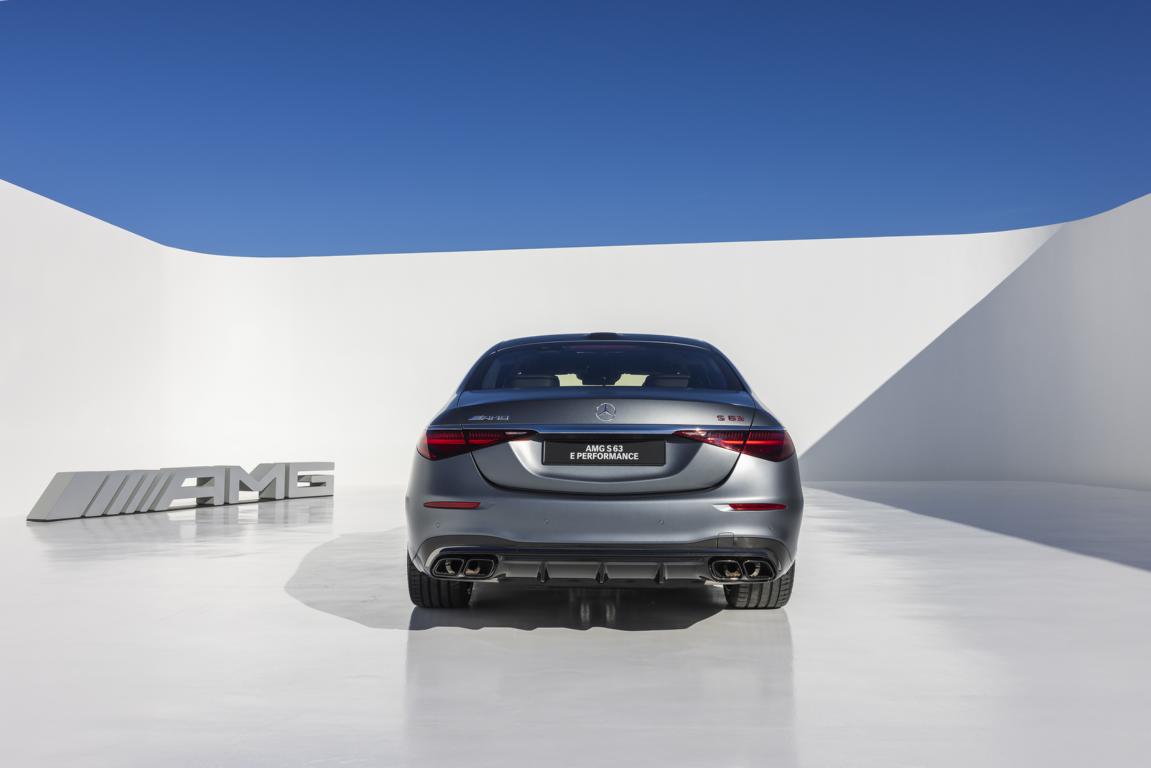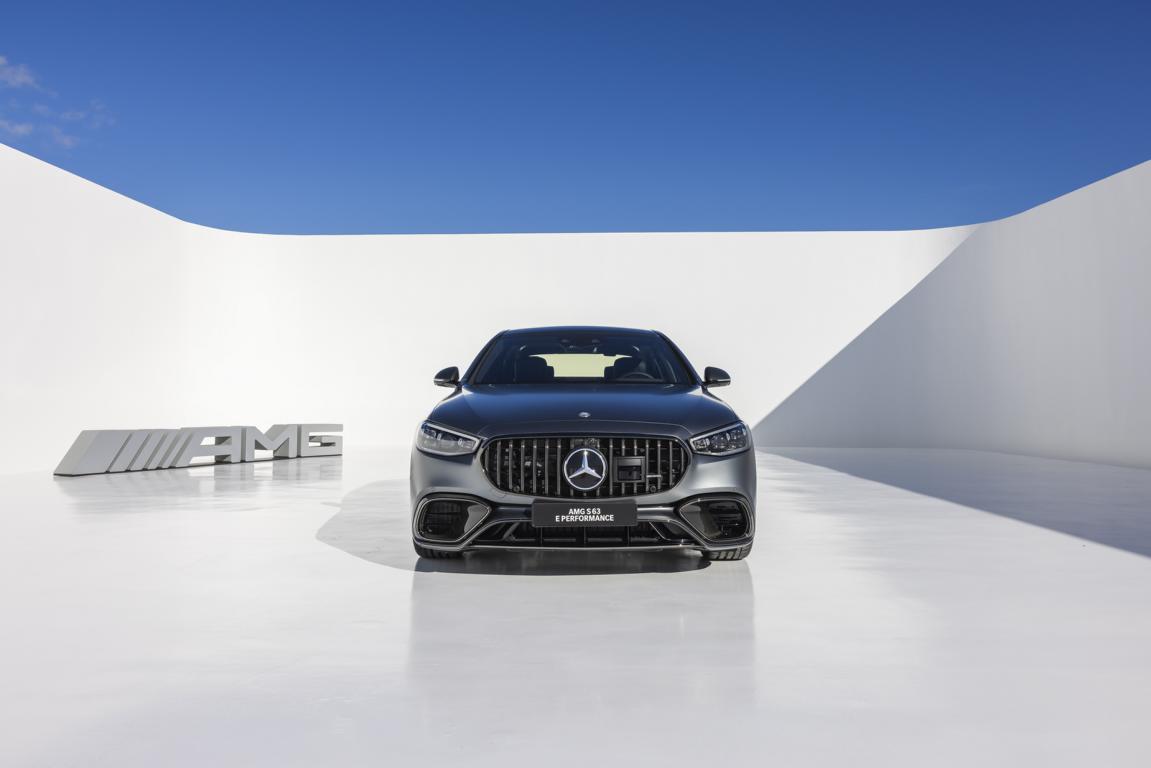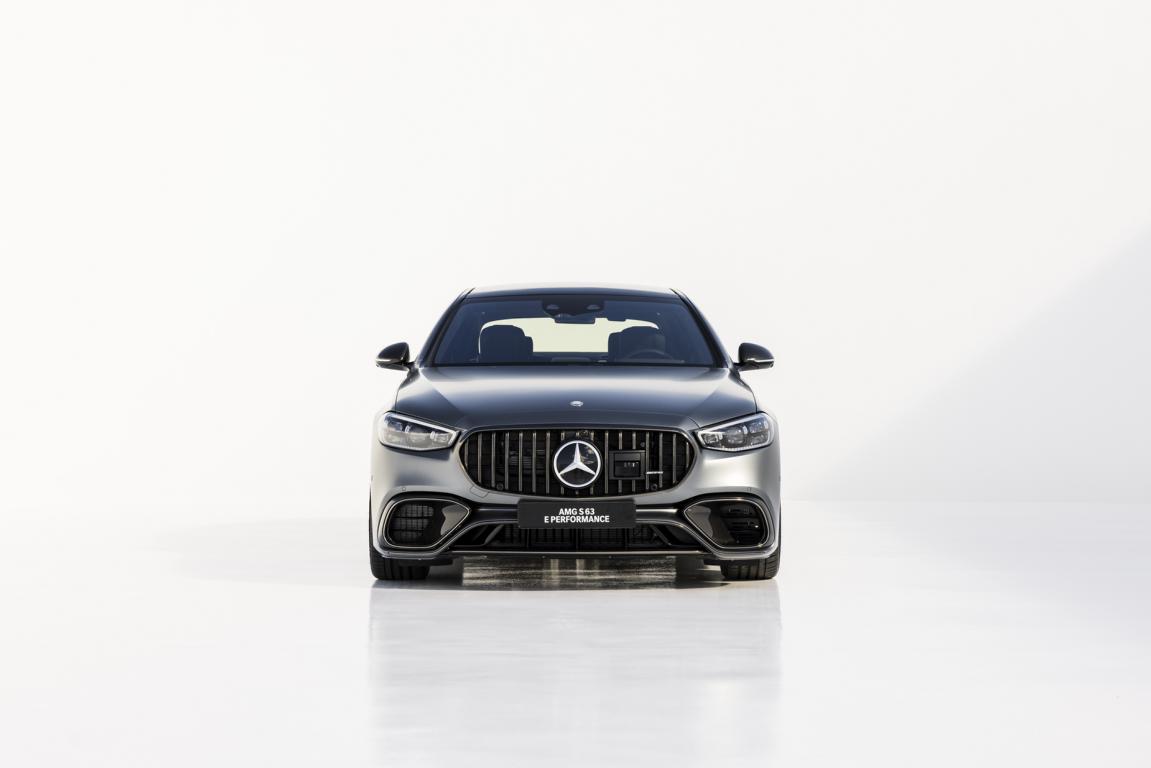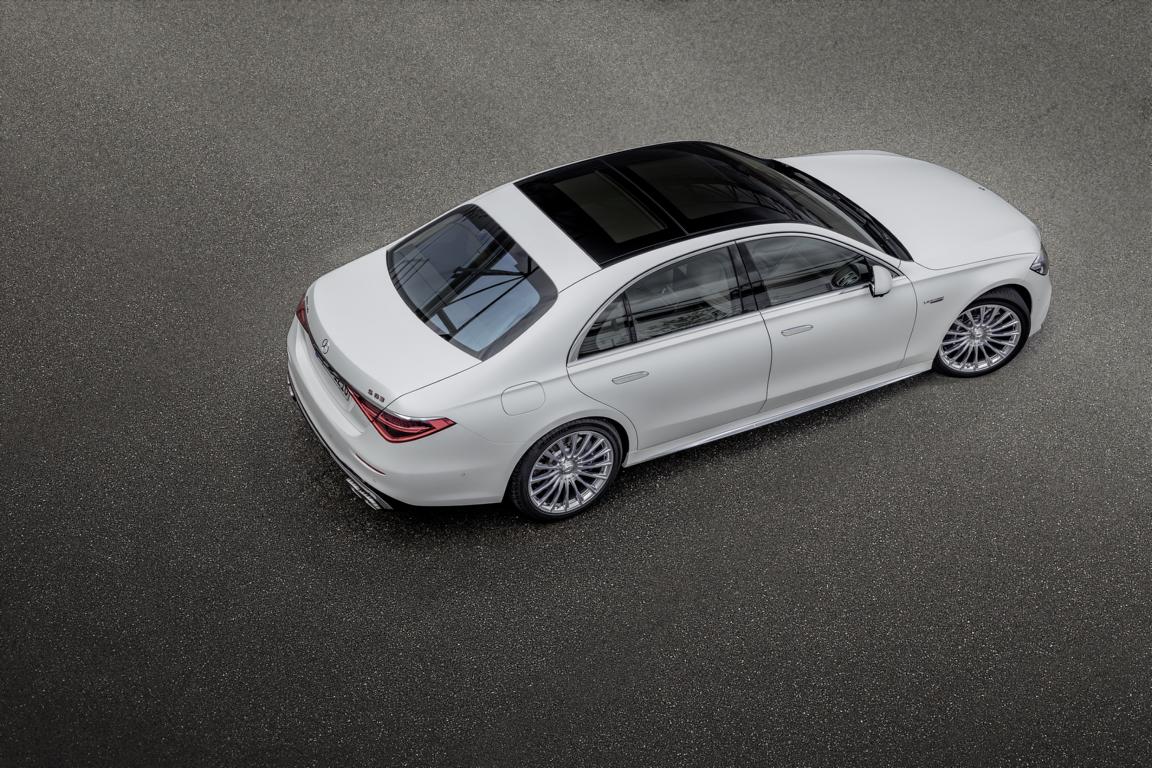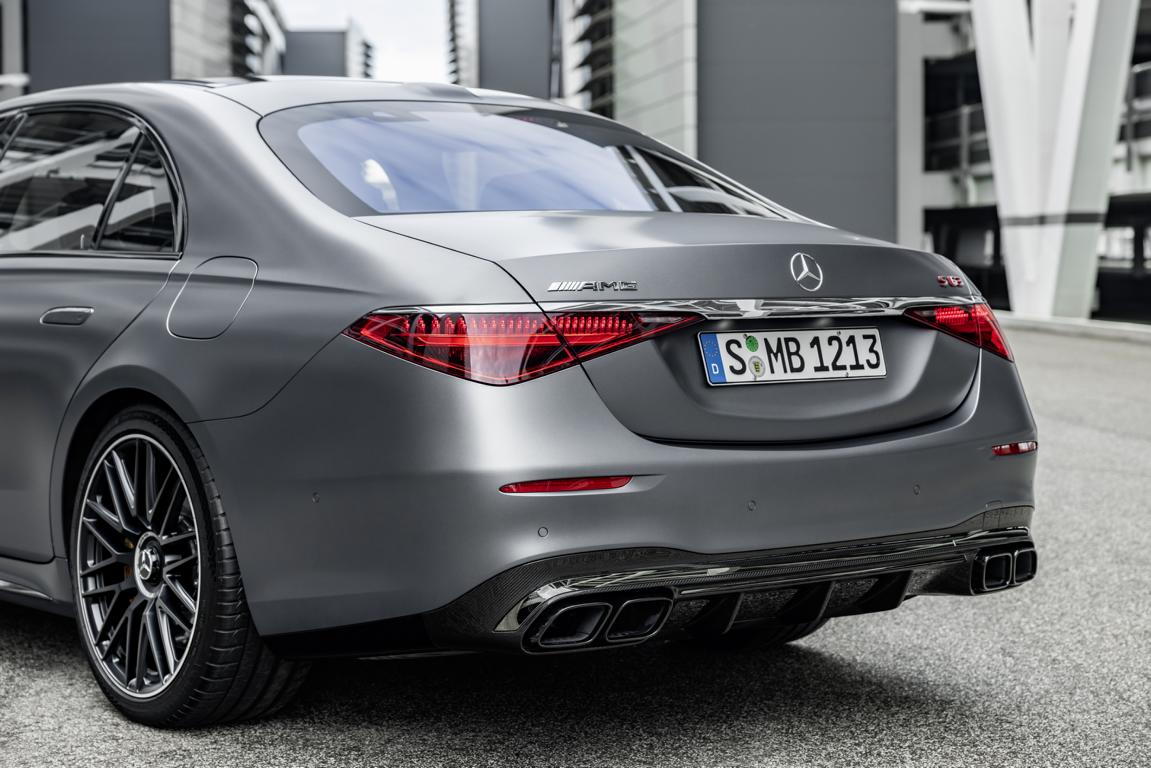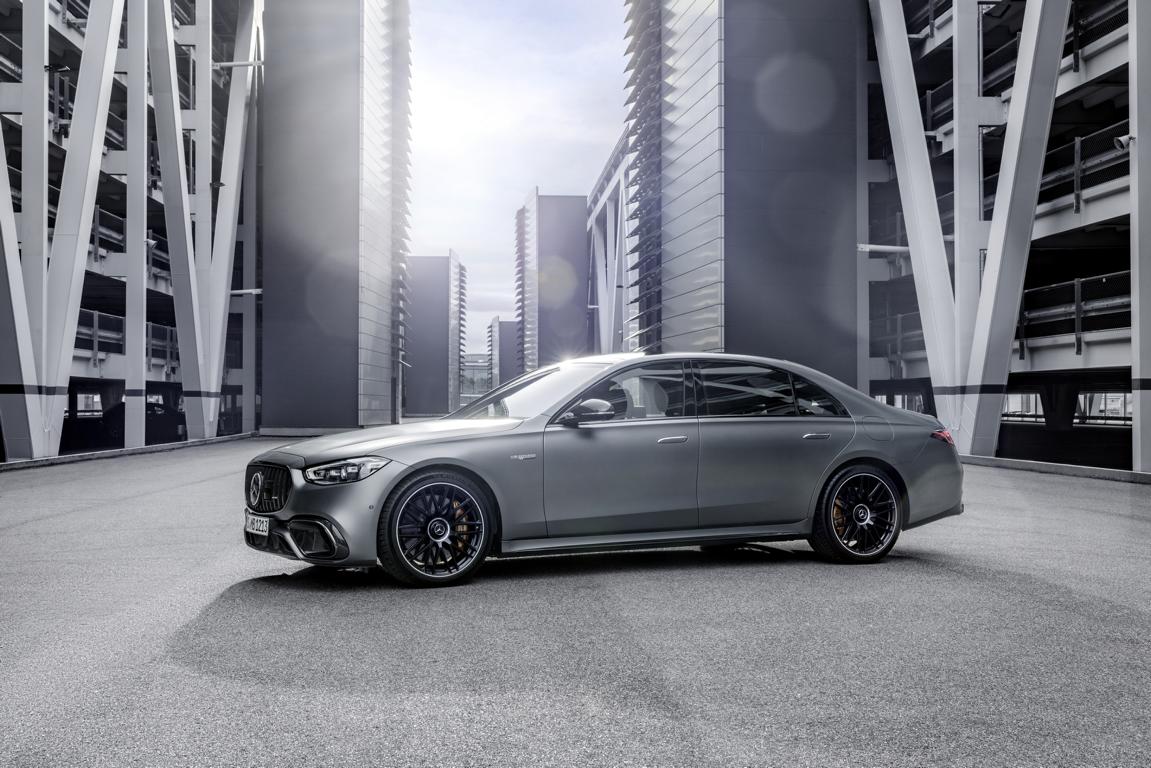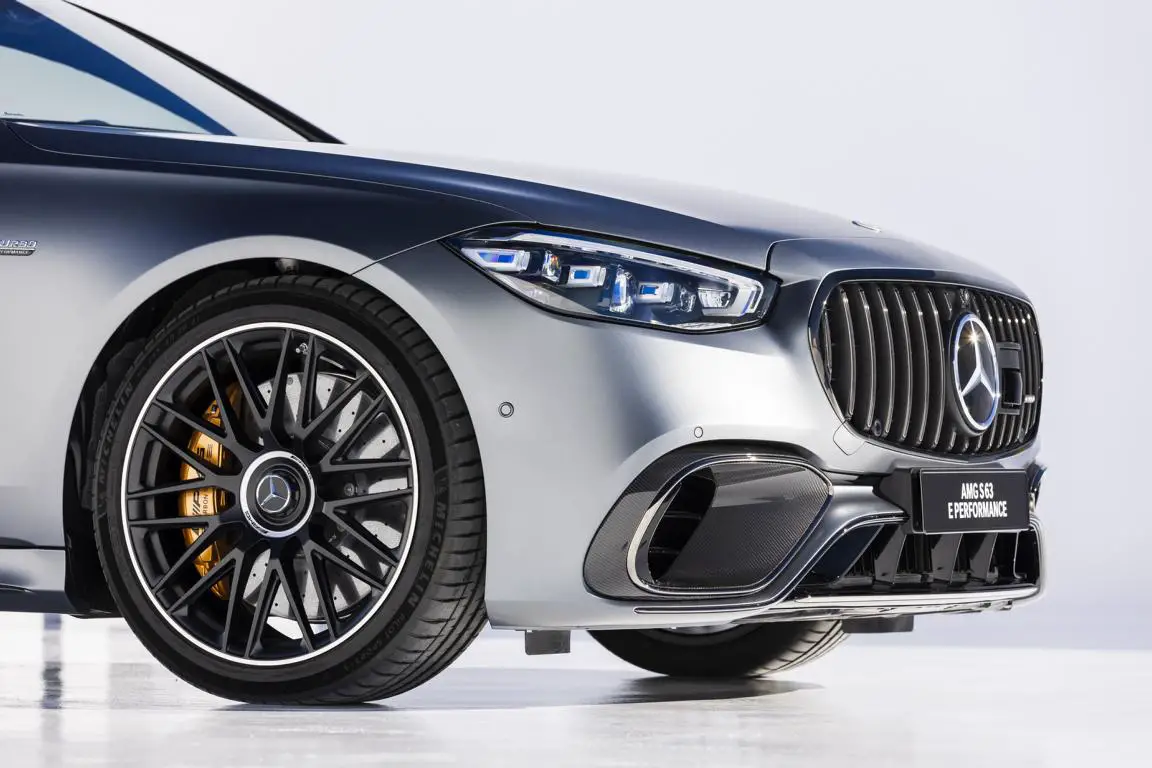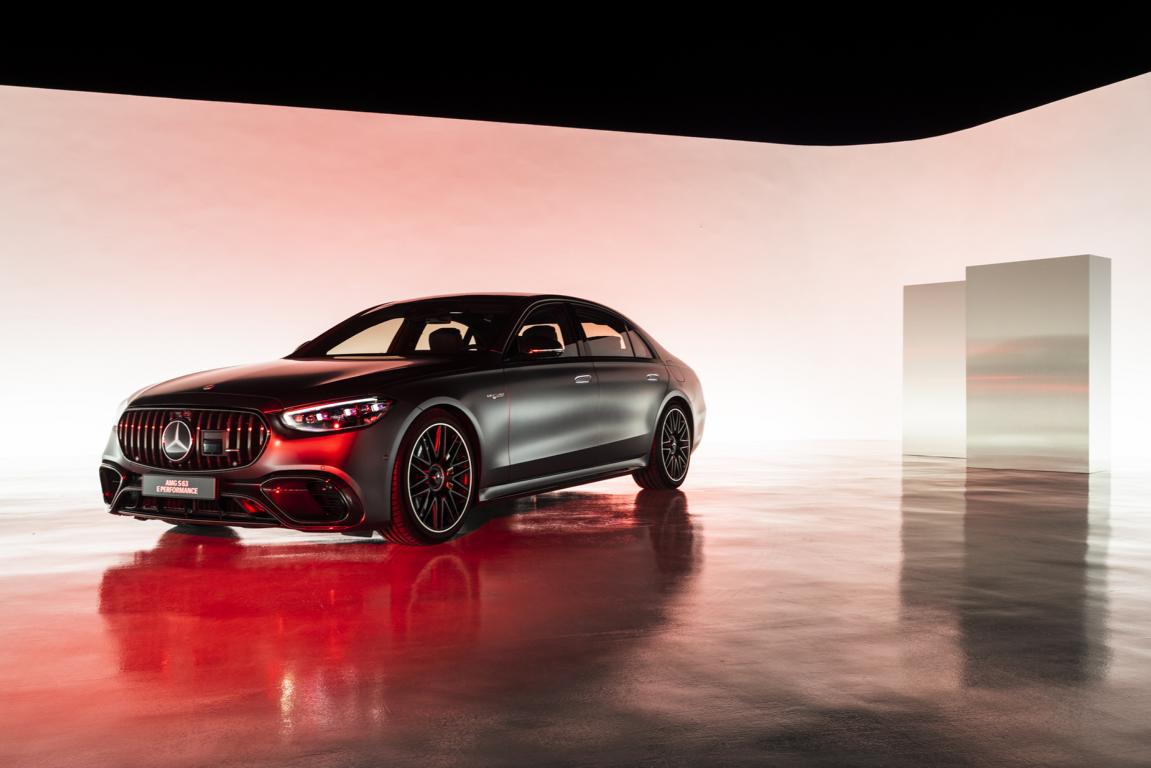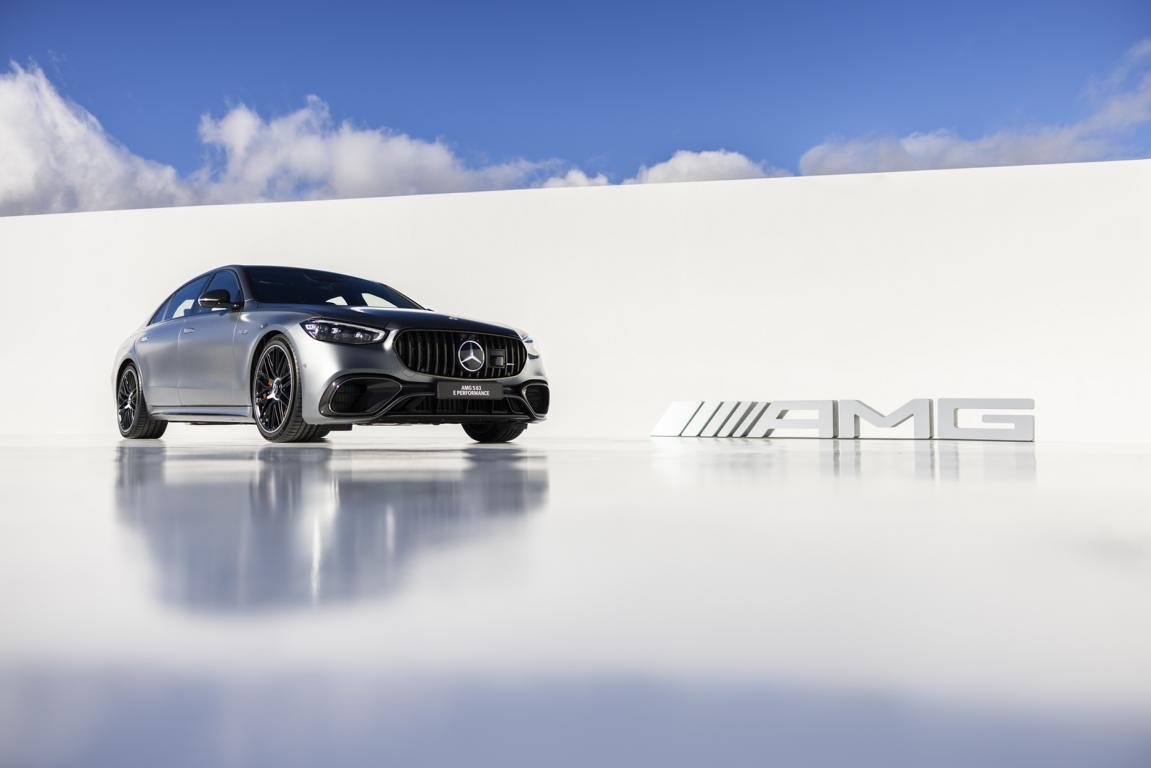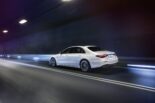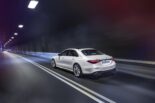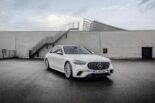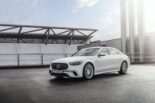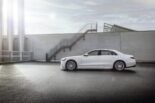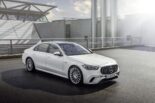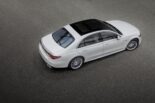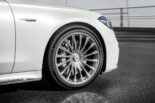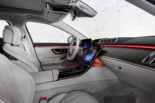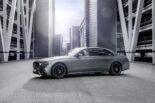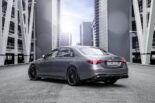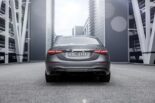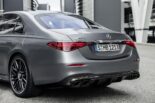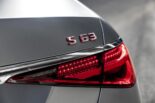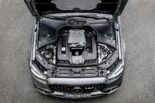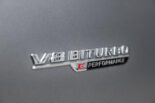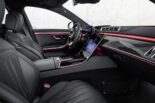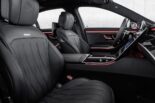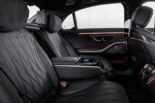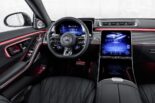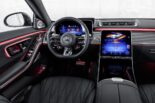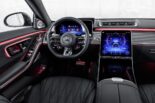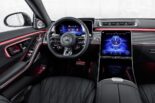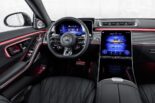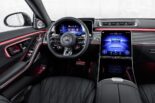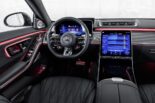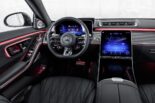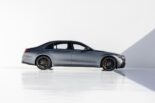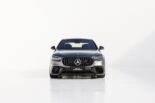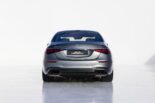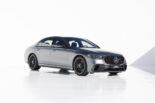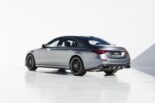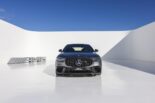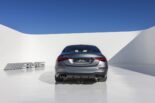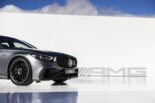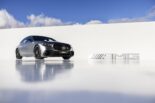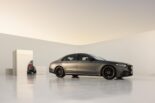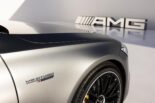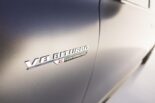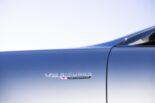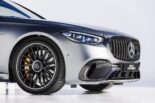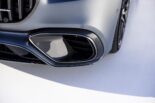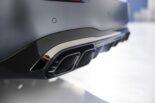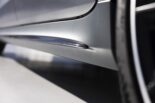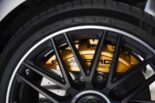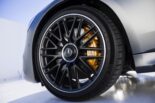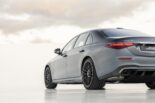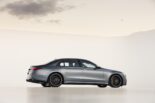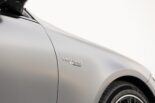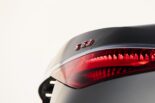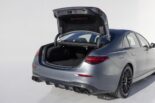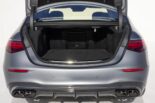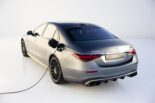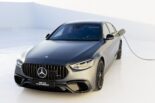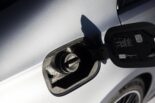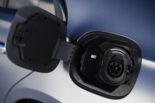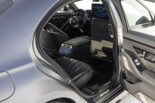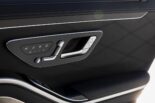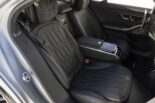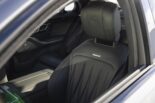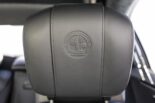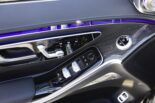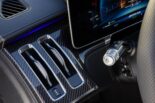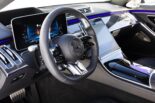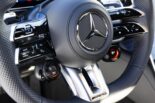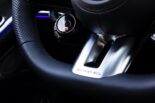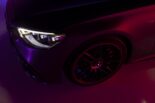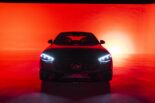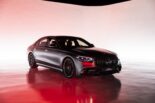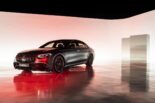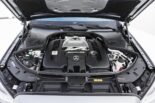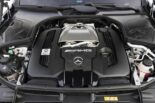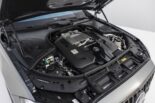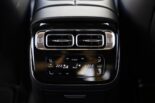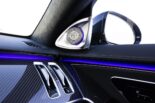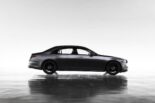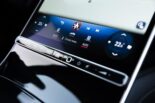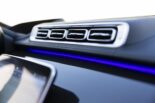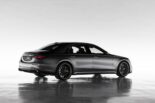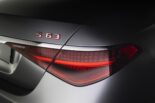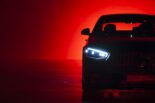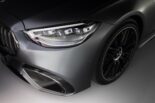The S-Class has always played an important role for Mercedes-AMG. More than 50 years ago, the founders proved that they can transform a luxury sedan into a very sporty vehicle with Swabian innovative spirit. The performance and sports car brand from Affalterbach set a first milestone in 300 with the Mercedes-Benz 6.8 SEL 1971 AMG. Today the new Mercedes‑AMG S 63 E PERFORMANCE (weighted fuel consumption, combined: 4,4 l/100 km, weighted CO2 emissions, combined: 100 g/km, weighted power consumption, combined: 21,4 kWh/100 km)[1] with AMG hybrid technology again a benchmark in the segment.
Mercedes AMG S 63 E Performance
The E PERFORMANCE model combines the AMG 4,0-litre V8 biturbo engine with the AMG-specific hybrid drive train and a new version of the AMG High Performance Battery (HPB). The new HPB 150 is based on the high-performance and directly cooled battery cells of the well-known HPB 80. The energy content increases from 6,1 in the HPB 80 to 13,1 kWh in the HPB 150. This increases the all-electric range to 33 kilometers.
- Performance hybrid with technology transfer from Formula 1™ now also in the S-Class segment
- Larger expansion stage of the AMG high-performance battery with a capacity of 13,1 kWh
- 4,0-liter V8 engine at the front and electric motor on the rear axle for a system output of 590 kW (802 hp).
- Active roll stabilization and active rear axle steering as standard
- AMG-specific radiator grille for the first time in the performance luxury sedan
- Most powerful S-Class ever
However, the focus of the powertrain is less on electric range and more on best-in-class performance. With a system output of 590 kW (802 hp) and a system torque of 1.430 Nm, the sedan sets new standards in the segment. Acceleration from 3,3 seconds to 100 km/h and the optional top speed of 290 km/h underline the sovereign, dynamic driving appearance. Systems such as the AMG RIDE CONTROL+ suspension, the AMG ACTIVE RIDE CONTROL roll stabilization and the standard rear-axle steering ensure a wide spread between driving dynamics and comfort.
“The S-Class has always had a very special meaning for us. In 1971, she made the AMG brand famous overnight with her legendary appearance at the 24-hour race in Spa. This was undoubtedly an important cornerstone for the rise as a performance and sports car brand with global importance. With E PERFORMANCE, we are now opening a new chapter: Never before in a luxury sedan have best-in-class performance been so perfectly combined with an outstanding comfort experience and almost noiseless electric driving. In this way, we are also opening up to highly demanding target groups who can experience Mercedes-AMG as a performance luxury brand of the 21st century. With the most powerful S-Class of all time, we not only go our own technical way, as is typical for AMG, but also make a strong visual statement: for the first time, the S-Class sedan also has our AMG-specific radiator grille, so that the brand affiliation is so close like never before."
Philipp Schiemer, CEO of Mercedes-AMG GmbH
"With our unique E PERFORMANCE in the AMG S-Class, we are also setting another technological milestone in electrification in this segment: our exclusive high-performance battery is used in the S 63 with a significantly higher capacity than previously known, which increases the electric range enlarged. The performance hybrid layout with combustion engine at the front and electric drive unit at the rear not only offers a superior driving experience, but also significantly increases efficiency. The optimized weight distribution, the best possible utilization of the torque and the very spontaneous power delivery promise driving dynamics and driving refinement at the highest level. In addition to the technically complex drive train, we also pulled out all the stops with the chassis to achieve the greatest possible spread between comfort and driving dynamics. For example, the combination of air suspension, rear-axle steering and active roll stabilization is on board for the first time in an AMG S-Class.”
Jochen Hermann, Technical Director of Mercedes-AMG GmbH
Expressive exterior design
The impressive performance of the Mercedes-AMG S 63 E PERFORMANCE is also expressed in the expressive exterior design. For the first time, an S-Class Saloon features the AMG-specific radiator grille with vertical louvres and a large central star. Instead of the earlier Mercedes star radiator ornament, the AMG crest is now placed in silver chrome/black. In addition, the front apron in jet wing design with large side air inlets and functional air curtains characterizes the front view. When viewed from the side, the up to 21-inch AMG forged wheels and the AMG-specific side skirts are striking. Characteristic design features of the 63 models can be found at the rear, such as the trapezoidal, ribbed twin tailpipe covers or the wide diffuser with longitudinal fins.
Noble interior with first-class fund
The interior combines the high-quality appointments of the S-Class with AMG-specific elements. The seats with AMG special graphics and unique stitching underline the elegant appearance. Exclusive colors and various nappa leather upholstery with an embossed AMG emblem in the front headrests emphasize either the sporty or the luxurious side of the S 63 E PERFORMANCE. The claim to leadership in the segment is also illustrated by the first-class rear and the multicontour seats for all four seats. There are also AMG-specific trim elements and the standard AMG Performance steering wheel with AMG steering wheel buttons.
MBUX multimedia system with hybrid-specific displays
The MBUX infotainment system includes various AMG and hybrid-specific displays and functions. These include the displays in the instrument cluster, in the portrait-format central multimedia display in the center console and in the optional head-up display. The view of the instrument cluster can be personalized with different display styles and individually selectable main views. The AMG-specific Supersport style offers the option of displaying different content via a vertical menu structure. This includes a menu with hybrid-specific temperatures or a setup menu that displays the current chassis or transmission settings. Supersport-style drivers can also display a navigation map, consumption data or all of the telemetry data available in AMG TRACK PACE.
The head-up display also offers AMG's own display styles such as Race and Supersport. These can be called up via the main menu in the instrument cluster. High-quality graphics in the multimedia display visualize the power flow of the entire drive system, speed, power, torque and temperature of the electric motor as well as the battery temperature. The Dolby Atmos® sound format takes the interior audio experience to a new level. Individual instruments or voices in the studio mix can be placed around the listening area. A new type of sound animation is thus possible: while conventional stereo systems control the loudspeakers via two channels, Dolby Atmos® can use the entire range and create a 360-degree experience.
AMG performance steering wheel in double-spoke design
The AMG Performance steering wheel with its striking double-spoke design and seamlessly integrated buttons also contributes to the brand-typical appearance. The AMG steering wheel buttons impress with brilliant displays and their intuitive operating logic. This can be used to control important driving functions and all driving programs without having to take your hands off the steering wheel. The recuperation levels of the hybrid drive can also be selected using the steering wheel buttons.
The AMG-specific E PERFORMANCE hybrid drive: combustion engine at the front, electric motor at the rear
In the new Mercedes-AMG S 63 E PERFORMANCE, the 4,0-liter V8 biturbo engine is combined with a permanently excited synchronous electric motor, a high-performance battery developed in Affalterbach and the fully variable AMG Performance 4MATIC+ all-wheel drive. The system output of 590 kW (802 hp) and the maximum system torque of 1.430 Nm enable impressive driving performance: Acceleration from a standstill to 100 km/h takes 3,3 seconds. The propulsion only ends at an electronically limited 290 km/h (with the optional AMG Driver's Package).
The 140 kW (190 hp) electric motor is positioned on the rear axle and integrated there with an electrically operated two-speed gearbox and the electronically controlled rear axle locking differential in a compact Electric Drive Unit (EDU). Experts call this layout a P3 hybrid. The high-performance battery is also located in the rear above the rear axle. The decisive advantage of this position of the EDU is the bypassing of the 9-speed gearbox, which is flanged to the V8 engine. With the position behind the gearbox, the torque of both drives can be fully utilized. The result: 1.430 Nm system torque – a new record in the class.
And there are many more arguments in favor of the P3 setup as a performance hybrid:
- The P3 concept enables electric boosting across the entire engine speed range with full torque.
- The electric motor acts directly on the rear axle and can thus convert its power directly into propulsion - for that extra boost when starting, accelerating or overtaking.
- The power of the electric motor can be deployed at full torque, as is typical of the design, so that particularly agile start-up behavior is possible.
- In addition, thanks to the integrated, electronically controlled rear axle locking differential, the driver immediately experiences a noticeable increase in performance: the hybrid model accelerates out of bends with great agility, offers optimum traction and therefore greater driving safety.
- If the rear axle slips, the drive power from the combustion engine and electric motor is also transferred to the front wheels as required. This enables the fully variable all-wheel drive to be mechanically connected by means of a cardan shaft and drive shafts for the front wheels. This also makes it possible to drive purely electrically with all-wheel drive.
- Positioning on the rear axle improves weight and axle load distribution in the vehicle. This forms the basis for the convincing handling.
- The AMG concept offers a very high level of efficiency during recuperation because the system only allows minimal mechanical and hydraulic losses from the engine and transmission. In the "Comfort" drive program, the combustion engine can be selectively decoupled. This reduces the drag torque when the driving situation allows it.
- The two-speed gearbox on the rear axle shifts automatically. With its specially tuned ratio, it ensures the spread from high wheel torque to agile starting to safe continuous performance at higher speeds. An electric actuator engages second gear at around 140 km/h at the latest, which corresponds to the maximum speed of the electric motor of around 13.500 rpm.
- With the increase in performance through the additional electric motor, the development team was also able to improve the efficiency of the entire vehicle at the same time - and achieve lower emissions and lower consumption.
The permanently excited synchronous machine (PSM)
The PSM is equipped with a hollow rotor made of permanent magnets and can therefore be installed around the output shaft to the left rear wheel. The e-machine is controlled by power electronics, which are also located on the EDU and convert accelerator pedal commands directly into a suitable power supply for the PSM. In addition, the sensitive control of the electric motor adjusts the speed when the two-speed gearbox shifts. This means that the gearbox in the EDU does not require any mechanical synchronization at all.
The boost torque of the e-machine can thus also be used at higher speeds. The maximum torque of an e-machine is available from the first revolution, but later drops again with higher speeds. Therefore, second gear, which is engaged at higher speeds, brings the e-machine into a lower speed range so that it can support the combustion engine over the entire speed range.
Inspired by Formula 1™, developed in Affalterbach: the AMG High Performance battery
When defining the electrification strategy, it was clear from the start that all essential components would be developed in Affalterbach. The centerpiece of this is the AMG High Performance Battery (HPB). The development of the lithium-ion energy storage is inspired by technologies that have proven themselves in the Formula 1 hybrid racing cars of the Mercedes-AMG Petronas F1 Team. The team of experts from the Formula 1 engine manufacturer High Performance Powertrains (HPP) in Brixworth exchanged information intensively with Mercedes-AMG in Affalterbach. The AMG high-performance battery combines high power that can be called up frequently in succession with low weight in order to increase the overall performance of the vehicle. Added to this are the fast energy consumption and the high power density.
70 kW continuous output and 140 kW at peak
The high-performance battery in the S 63 E PERFORMANCE offers a capacity of 13,1 kWh, more than twice as much as in the already well-known HPB 80. It delivers 70 kW of continuous mechanical power and 140 kW of mechanical peak power (for ten seconds) to the electric motor . External charging takes place via the installed 3,7 kW on-board charger with alternating current at a charging station, wall box or domestic socket. The battery is designed for fast power delivery and absorption and not for the longest possible range. Nevertheless, the electric range of 33 kilometers enables a practical range of action, for example for quiet and fully electric driving out of a residential area.
The innovation boost: the direct cooling of the battery cells
The basis for the high performance of the AMG 400-volt battery is direct cooling: a high-tech coolant based on an electrically non-conductive liquid flows around all 1.200 cells and cools them individually. Every battery needs a defined temperature for optimum power output. If the energy store gets too cold or too hot, it loses power noticeably at times or has to be turned down to avoid damage when the heat levels are too high. An even temperature control of the battery therefore has a decisive influence on its performance, service life and safety. Conventional cooling systems, which only cool the entire battery pack with air or indirectly with water, quickly reach their limits. If the thermal management does not optimally fulfill its function, there is a risk of premature aging of the battery.
For direct cooling, the AMG team had to develop new cooling modules that were only a millimeter thick. Around 30 liters of coolant circulate from top to bottom through the entire battery past each cell with the help of a specially developed high-performance electric pump. They also flow through an oil/water heat exchanger that is attached directly to the battery. This dissipates the heat into one of the two low-temperature circuits (LT) of the vehicle. From there it goes on to the NT cooler at the front of the car, which gives off the heat to the ambient air. The system is designed to ensure even heat distribution in the battery.
The result: The battery is always within an even, optimal working temperature window of an average of 45 degrees Celsius, no matter how often it is charged or discharged. If you drive hard, it is quite possible that the average temperature will be exceeded. The protective mechanisms are therefore set in such a way that the maximum power can be drawn from the battery in order to then reduce the temperature level again through direct cooling. Conventional cooling systems cannot do this, and the battery can no longer fully utilize its capacity.
This is not the case with the AMG high-performance battery: the energy store retains its high performance even under heavy loads, with frequent acceleration (battery being discharged) and deceleration (battery being charged). Only effective direct cooling makes it possible to use cells with a very high power density. Thanks to this individual solution, the battery system is particularly light and compact. The material-saving busbar concept also contributes to the low weight. The light, but at the same time stable crash structure of the aluminum housing guarantees maximum safety.
Recuperation can be selected in four stages
Because the high-performance battery is always within the optimal temperature window of around 45 degrees, recuperation can also be optimized: Normally, a battery heats up a lot when recuperation is high, so that energy recovery has to be restricted. Recuperation begins when the driver takes his foot off the accelerator pedal, i.e. when coasting without touching the brake pedal. The battery is charged and a braking torque is generated.
This protects the wheel brakes: Depending on the level of recuperation and the traffic situation, they do not have to be operated at all. Another benefit of recuperation: on steep descents, the system works like an engine brake and feeds energy into the battery. The driver can select four different levels of recuperation performance using the AMG steering wheel button on the right. This applies to all driving programs with the exception of "Slippery" and "ESP Sport Handling" or "ESP Off", whereby the energy recovery is designed differently depending on the driving program.
- Level 0: The vehicle behaves in a similar way to a conventional combustion engine with manual transmission, where the clutch is disengaged. If the driver takes the gas off, the car rolls on with the least resistance. The recuperation power is very low and only serves to maintain the vehicle's power supply. When the combustion engine is switched off, the friction losses in the drive train are reduced to a minimum.
- Level 1: This is the default setting. The driver can feel the recuperation. It roughly corresponds to the deceleration of a conventional, engaged internal combustion engine.
- Level 2: Stronger recuperation. When swimming along in traffic, the brake pedal hardly needs to be pressed.
- Level 3: Maximum energy recovery. So-called "one-pedal" driving is almost possible here, as with a purely electric car. Depending on the driving situation, more than 90 kW of power can be fed back into the battery.
Operating strategy: electrical power always available
The basic operating strategy is derived from the hybrid power pack of the Mercedes-AMG Petronas Formula 1 racing car. As in the premier class of motorsport, maximum propulsion is always available when the driver calls it up with a kick-down - to accelerate powerfully out of corners or to overtake quickly. The electric power can always be called up and frequently reproduced via high recuperation performance and needs-based recharging. The independent battery concept enables the optimal compromise between maximum driving dynamics and modern efficiency. All components are intelligently matched to one another: the increase in performance can be experienced and measured immediately.
Seven AMG drive programs
The seven AMG DYNAMIC SELECT drive programs "Electric", "Comfort", "Battery Hold", "Sport", "Sport+", "Slippery" and "Individual" are precisely tailored to the new drive technology. They offer a wide range of driving experiences - from efficient to dynamic. The driving programs adjust important parameters: the response of the drive and transmission, the steering characteristics, the chassis damping or the sound. The boost performance of the electric motor also depends on the respective driving program. It can be selected via the display in the center console or the AMG steering wheel buttons. However, one thing is the same for all programs: The peak performance of the electric motor can be called up very easily using the kick-down function. The haptic accelerator pedal provides a tactile pressure point that the driver's foot has to overcome.
By default, the performance hybrid starts silently ("Silent Mode") in the "Comfort" (USA: "Electric") drive program when the electric motor is switched on. The "Ready" icon in the instrument cluster signals readiness to drive. In addition, a powerful, sonorous, AMG-typical start-up sound sounds as acoustic feedback that the driver is ready to drive, which is radiated into the interior via the vehicle loudspeakers. A light step on the accelerator pedal is all it takes for the AMG Performance Hybrid to start moving.
- "Electrical": The focus is on the electric driving experience. The vehicle drives purely electrically from a standstill up to a maximum of 140 km/h. The combustion engine is always switched off. Thanks to the mechanical connection to the AMG Performance 4MATIC+ components, all-wheel drive is always available: if the rear wheels suddenly start to slip too much, the power of the electric motor is also transmitted to the front wheels via the cardan and drive shafts. If the battery runs out or the driver requests more power, the intelligent operating control automatically switches to the "Comfort" drive program: the combustion engine starts and almost imperceptibly takes over the drive power.
- "Comfort": Starting is mostly electric. The combustion engine and electric motor then run according to the situation - with electric drive at low speeds, for example in residential areas or in the city center. The vehicle usually drives in hybrid mode on country roads and on the motorway. The overall result is a harmonious and consumption-optimized driving impression, among other things due to the early upshifting of the AMG SPEEDSHIFT MCT-9G transmission. The chassis and steering are tuned for comfort. The focus of the control is on energy efficiency, which reduces fuel consumption and emissions. The sportiness and agility typical of AMG are retained.
- "Battery Hold": As in the “Comfort” drive program, the combustion engine and electric motor run according to the situation. Biggest difference: The operating strategy keeps the battery charge level constant. For example, if the battery has a charge level of 75 percent, it remains in this range in "Battery Hold". The use of the electric motor is then limited and optimized for low energy consumption, which is compensated for by recuperation, for example. Advantage for drivers: By simply changing the driving program, they can decide when they want to use the full battery charge again.
- "Sports": Starting with combustion engine and electric motor and permanent interaction of the two drives. More boost from the electric motor is released. Sporty character of the driving impression through more agile response to accelerator pedal commands, shorter shift times and earlier downshifts. More dynamic tuning of chassis and steering.
- "Sport +": Starting with combustion engine and electric motor and permanent interaction of the two drives. Even higher boost performance. Extremely sporty characteristics thanks to even more agile throttle response and targeted torque interventions when shifting up with cylinder suppression for optimum shift times. Increased idle speed for faster starts. The chassis, steering and drive train have been tuned to be even more dynamic.
- "Smoothness": Is optimally tuned to slippery roads, with reduced power input and reduced boost as well as a flat torque curve. Purely electric driving and the recuperation adjustment are deactivated.
- "Individual": Individual adaptation of drive, transmission, AMG DYNAMICS, chassis, steering and exhaust system.
Driving dynamics control combines agility with stability
The integrated driving dynamics control AMG DYNAMICS is also standard. It influences the control strategies of the ESP® (Electronic Stability Program), the all-wheel drive and the electronically controlled rear-axle locking differential. This increases agility without sacrificing stability. Particularly noteworthy: AMG DYNAMICS determines how the vehicle should react. To do this, the system uses the existing sensors, which record the speed, lateral acceleration, steering angle and yaw rate, among other things.
Using an intelligent pre-control, the vehicle behavior can be predicted from the actions of the driver and the data from the sensors. The control adapts to the driving dynamics abilities of the driver - without any noticeable or disruptive interventions by the system. The result is an authentic driving experience with high cornering dynamics and optimum traction with high stability and predictable handling. Even experienced pilots are optimally supported without being patronized by the system.
- "Basic"is assigned to the "Comfort" and "Electric" drive programs. The design results in very stable handling with high yaw damping.
- "Advanced"is activated in the "Sport" program. The vehicle remains neutrally balanced. The lower yaw damping and increased agility support dynamic maneuvers such as driving on winding country roads.
- "Per"(Abbreviation for "Professional") belongs to the "Sport +" program. In "Pro", the driver is given even more support during dynamic driving maneuvers, and agility and roadway feedback when cornering are further increased.
In the "Individual" drive program, the driver can set the AMG DYNAMICS levels "Basic", "Advanced" and "Pro" himself.
Own sound experience when driving electrically
When driving purely on electricity, the statutory Acoustic Vehicle Aging System warns the surroundings of the approach of the performance hybrid. A specially composed, low-frequency and speed-modulated AMG sound is heard. This is radiated to the outside via loudspeakers. Part of the sound can be heard discreetly as acoustic feedback for the passengers in the interior. In the European Union, the system is active up to 20 km/h, in the USA up to the equivalent of approx. 30 km/h. The electric driving signal then fades out harmoniously. If you want, you can also experience the electric driving sound up to higher speeds. All you have to do is select the sound using the corresponding button on the steering wheel (recognizable by the frequency wave symbol).
Superior power pack: AMG 4,0-liter V8 biturbo engine
A central component of the P3 hybrid drive train is the AMG 4,0 V8 biturbo engine, which here has an output of 450 kW (612 hp). Creates a maximum torque of 900 Nm, which is available over a wide speed plateau. The most important design measures of the engine include the two twin-scroll turbochargers, which are located in the hot inner V. The location between the two banks of cylinders shortens the paths of the exhaust gases to the turbocharger and the compressed fresh air to the combustion chamber. The result is a very spontaneous response. Another important feature is the belt-driven starter generator (RSG), which is integrated into the 400-volt on-board electrical system. It combines the starter and alternator in one piece and has enough power to always start the V8 spontaneously.
Active engine mounts for the first time in the S-Class
The S 63 E PERFORMANCE is the only model in the market segment to be equipped with active engine mounts. The mounts solve the conflict of objectives between a soft connection of the drive train for high comfort and a hard connection for optimal driving dynamics: They can continuously adjust their rigidity to the respective driving conditions. The vehicle sensors recognize the current driving situation and the resulting vibration behavior of the engine and pass this information on to a control unit. This regulates the force with which the engine is coupled to the body. The biggest advantage is the even greater spread between performance and comfort.
Short shift times, high efficiency: the AMG SPEEDSHIFT MCT 9G transmission
In the AMG SPEEDSHIFT MCT 9G transmission (MCT = Multi-Clutch Transmission), a wet starting clutch replaces the torque converter. It reduces the weight and, thanks to its lower mass inertia, optimizes the response to commands from the accelerator pedal, especially when sprinting and changing loads. The elaborately coordinated software ensures short shift times and, if necessary, fast multiple downshifts. Thanks to the double-declutching function in the "Sport" and "Sport+" driving programs, it delivers a particularly emotional shifting experience.
Defined ignition interventions mean that gears can be changed even more quickly here than in the other modes. In all driving programs, starting off takes place in first gear to ensure a dynamic driving experience at all times. In addition, the RACE START function is applied, which guarantees optimal acceleration from a standing start. In manual "M" mode, the transmission reacts immediately and precisely to the driver's manual shift commands and implements the commands at lightning speed.
Fully variable all-wheel drive AMG Performance 4MATIC +
The AMG Performance 4MATIC+ all-wheel drive combines the advantages of different drive concepts: the fully variable torque distribution to the front and rear axles ensures optimum traction at the physical limit. Drivers can rely on a high level of driving stability and driving safety under all conditions: on dry roads as well as on wet or snowy roads. The transition from rear to all-wheel drive and vice versa takes place continuously on the basis of a sophisticated matrix that integrates the intelligent control into the overall vehicle system architecture.
An electromechanically controlled clutch variably connects the constantly driven rear axle with the front axle. The best possible torque distribution is continuously calculated depending on the driving situation and the driver's wishes. In addition to traction and lateral dynamics, the all-wheel drive also improves longitudinal dynamics for even more powerful acceleration.
High torsional rigidity: extensively reinforced body shell
The basis of the high driving dynamics and outstanding comfort is the stable body shell of the AMG S-Class. At the front there is an aluminum thrust panel under the V8 biturbo engine. It increases the torsional rigidity of the front end and thus improves the feedback to the driver - especially when turning. A strut cross at the mounting points of the chassis also stiffens the bodyshell structure. At the rear there are diagonal struts made of light and strong aluminum in the underbody to noticeably increase driving precision. A specific load compartment recess made of light fiber-reinforced plastic (FSK) accommodates the AMG high-performance battery and at the same time increases the rigidity of the bodyshell in this area.
Standard AMG RIDE CONTROL+ suspension with adaptive adjustable damping
The AMG RIDE CONTROL+ suspension is based on air suspension with automatic level control combined with adaptive adjustable damping. The air spring struts are filled with air according to the situation and thus enable a softer or harder setup. Another feature is the level control, with which the S-Class is automatically lowered by 120 millimeters from 10 km/h.
With the help of two infinitely variable control valves, the damping force can be adjusted very precisely to different driving conditions and driving programs: one valve controls the rebound stage, i.e. the force that occurs when the wheel rebounds, and the other the compression stage when the wheel compresses. Rebound and compression are controlled independently of each other. The AMG development team was able to significantly increase the spread between sportiness and comfort, among other things by expanding between the minimum and maximum damping force characteristic curve and even greater flexibility in the map design. Due to the special design of the valves, the damper reacts quickly and sensitively to changing road surfaces and driving conditions.
The driver can preselect the basic set-up via the AMG DYNAMIC SELECT drive programs: at the push of a button, for example, the handling changes from fully dynamic in "Sport+" mode to smooth cruising in the "Comfort" setting. In addition, the tuning can be adjusted in three stages (“Comfort”, “Sport” and “Sport+”) using a separate button, independently of the driving programs. The system's control software continuously monitors operating data such as steering wheel angle, vehicle speed, acceleration and body movement. The dampers are controlled according to the situation within milliseconds. The result: Even with extreme driving maneuvers or bad roads, the wheels are always firmly on the ground. There are three different damper maps to choose from.
Active roll stabilization as standard
Another feature makes a decisive contribution to the AMG-specific set-up for high driving dynamics: AMG ACTIVE RIDE CONTROL active roll stabilization. Instead of using conventional, rigid anti-roll bars, the system compensates body movements electromechanically. For this purpose, the anti-roll bars on the front and rear axles are divided into two. In the middle is an electromechanical actuator with an integrated three-stage planetary gear. If the road surface is uneven or the driving style is moderate, the actuator actively separates the stabilizer halves from one another, which increases driving comfort. When used dynamically, for example on a winding route, the halves connect with each other and are twisted against each other.
However, the system not only reduces body roll when cornering, but also enables more precise coordination of the steering and load change behavior. It also increases driving comfort when driving straight ahead because, for example, stimuli caused by bumps on one side of the road are compensated for. Movements of the body can be actively and optimally adapted to the driving situation. As a result, the typical AMG characteristic of driving behavior in terms of dynamics, precision and feedback for the driver can be experienced even more intensely.
In order to meet the high performance requirements, the system is based on an additional 48-volt sub-board network. Another advantage compared to conventional systems based on hydraulics is the significantly faster response. The AMG control can adjust the driving status up to 500 times per second. Added to this is the lower weight of the components compared to hydraulic solutions.
Performance hybrid drive can regulate the traction of a wheel instead of ESP
Further advantages of the hybrid drive arise for the driving dynamics control. Instead of motor intervention by the ESP®, the electric machine can also regulate traction as soon as one wheel signals too much slip. To do this, the intelligent controller reduces the drive torque of the electric motor, which is transmitted to the wheel via the rear axle locking differential. The result: the ESP® does not have to throttle the combustion engine or only does so later. Advantage: The combustion engine can be operated with higher torque. This improves agility afterwards. In addition, the otherwise reduced power can be used to charge the battery.
Three-stage AMG speed-sensitive steering and rear-axle steering as standard
The steering layout also contributes to the increase in dynamics and comfort. The three-stage AMG speed-sensitive steering has a variable steering geometry ratio that adapts to the selected drive program. At high speeds, the power steering decreases, at low speeds it increases continuously. As a result, only comparatively little effort is required at low speeds and when maneuvering and parking. When driving faster, the best possible control over the vehicle is maintained. In the "Sport" and "Sport+" suspension settings, the steering wheel also provides significantly more feedback on the driving condition.
The standard rear axle steering operates with a maximum steering angle of 2,5 degrees. Up to this point, the rear wheels turn in the opposite direction to the front wheels at speeds of up to 100 km/h (varies depending on the AMG DYNAMICS setting). This leads to a virtual shortening of the wheelbase and results in significantly more agile steering, less steering work and increased maneuverability. The turning circle is noticeably reduced when turning or parking. At speeds of more than 100 km/h (varies depending on the AMG DYNAMICS setting), the rear wheels turn parallel to the front wheels.
The virtual lengthening of the wheelbase has a positive effect on driving stability: it builds up the lateral force more quickly when changing direction and thus enables the vehicle to react more directly to steering commands. The response of the rear-axle steering depends on the selected AMG DYNAMIC SELECT drive program. The interplay of active roll stabilization and active rear-axle steering helps spread the handling even further. On the one hand, the AMG S-Class is a comfortable touring sedan with absolutely stable handling at high speeds. On the other hand, the driver can call up sporty characteristics with agile light-footedness and maneuverability at the touch of a button.
Easy to dose and stable: the AMG high-performance composite brake system
The standard AMG high-performance composite brake system with 6-piston fixed calipers at the front and 1-piston floating calipers at the rear slows things down in accordance with the extreme power values and the associated performance. The brake discs on the front axle measure 400 x 38 millimeters and 380 x 32 millimeters on the rear axle. The brake system convinces with very short braking distances as well as maximum stability and fading stability under heavy loads. In addition, it scores with a long service life and a particularly spontaneous response.
The comfort functions include hill start assist as well as pre-filling and dry braking in the wet. When the ignition is switched off and the vehicle is stationary, the park position "P" is automatically activated by the transmission; the electric parking brake releases automatically when driving off. The AMG ceramic high-performance composite brake system is available as an option. The light brake material saves weight and reduces the unsprung masses.
Drive more comfortably and safely with numerous assistance systems
Numerous new or extended driving assistance systems support the drivers. They relieve everyday stress by providing situation-specific support for speed adjustment, distance control, steering and lane changing. Drivers can stay fit longer and reach their destination more safely and comfortably. In the event of danger, i.e. if an accident is imminent, for example due to carelessness, driver assistance systems can react to the danger depending on the situation and thus reduce the severity of possible collisions or even avoid them altogether.
The new assistance display in the driver's display shows how the driver assistance systems work in a clear and understandable full-screen view. Drivers see their car, lanes, lane markings and other road users such as cars, trucks and two-wheelers in a spatially abstract manner. The system status and functionality of the assistants are visualized on the basis of this representation of the environment. The new animated assistance display is based on a 3D scene generated in real time. This high-quality and dynamic representation makes the functionality of the driver assistance systems transparent in an augmented reality driving experience.
The most important new features of the driver assistance systems in the Mercedes-AMG S-Class
Active distance assistant DISTRONIC
This intelligent system can automatically maintain the preselected distance from vehicles in front on all types of roads - motorway, country road and in the city.
- What is new is the collision-avoiding reaction to stationary road users up to a maximum of 100 km/h (previously: 60 km/h) and the choice of dynamic DISTRONIC in MBUX, independently of DYNAMIC SELECT.
Active steering assistant
It supports drivers at speeds of up to 210 km/h when following the lane.
- New features are lane detection with an additional 360° camera, significantly increased availability and cornering performance on country roads, increased lane centering on motorways, situation-specific driving style that is off-lane (e.g. formation of an emergency lane, but also orientation at the edge of the road on country roads without center markings).
Traffic sign assistant
In addition to conventionally signposted speed limits, it also recognizes gantries and construction site signs.
- New features are the stop sign warning function - warning against driving over a stop sign - and the red traffic light warning function - warning about driving over a red traffic light.
Active lane keeping assistant
At speeds of between 60 and 250 km/h, Active Lane Keeping Assist uses a camera to detect when lane markings and edges are being driven over and helps the driver to avoid unintentionally leaving the lane. The system also intervenes if there is a risk of collision with other road users identified in the adjacent lane, such as overtaking or oncoming vehicles.
- What is new is the reaction to the edges of the road, e.g -Displays.
Active lane change assistant
Active Lane Change Assist provides the driver of the new S-Class with cooperative support when changing lanes to the neighboring lane. The lane change to the left or right is only supported if, according to the sensors, the neighboring lane is separated from your own by an interrupted lane marking and no vehicles have been detected in the relevant safety area.
- New are the longer search phase (15s instead of 10s, depending on the country), in which the lane change can take place, and the higher lateral dynamics (depending on the country).
Active emergency stop assistant
Active Emergency Stop Assist brakes the vehicle to a standstill in its own lane if it detects that the driver is no longer interfering with driving while driving. This works in the new Mercedes-AMG S-Class even if the Active Distance Assist DISTRONIC with Steering Assist is not switched on.
- Other new features include seat belt tensioners and braking jolts as the last indication before braking is initiated, as well as an optional lane change of one lane (at 80 km/h, no obstacles in the adjacent lane).
ATTENTION ASSIST
The standard system can recognize typical signs of driver fatigue and severe inattentiveness and prompts them with a warning message to take a break in good time.
- The additional microsleep warning is new. It includes the analysis of the blink of the driver's eyelids by a camera in the driver's display (only in connection with certain special equipment). The microsleep warning is already active from a speed of 20 km/h.
Active Brake Assist with an intersection function
Active Brake Assist uses the sensors installed in the vehicle to register whether there is a risk of collision with vehicles ahead, crossing or oncoming. In the event of an impending collision, the system can warn drivers visually and acoustically. If the braking is too weak, it is also possible to support drivers by increasing the braking torque appropriate to the situation and to initiate autonomous emergency braking if the driver fails to react.
- New features are the turning function (including crossing pedestrians when turning), the extension of the crossing function on overland routes (up to 120 km/h instead of 72 km/h) and the warning and braking for oncoming traffic.
Active Blind Spot Assist and exit warning function
The Active Blind Spot Assist can give a visual warning of side collisions at speeds of around 10 to 200 km/h and also an audible warning when the turn signal is activated. If drivers ignore the warnings and nevertheless initiate a lane change, the system can intervene at the last moment at speeds of over 30 km/h by braking on one side to correct the lane. In addition, the exit warning function can signal when stationary before exiting that a vehicle (including bicycles) is driving past in the critical area. This function is available when stationary and up to 3 minutes after switching off the ignition.
- The addition of the danger display with the help of the active ambient lighting (also with the exit warning) is new. Thanks to the cameras of the MBUX interior assistant, a hazard can even be displayed if the vehicle occupants only move their hand in the direction of the door handle.
Evasive Steering Assistant
Evasive Steering Assist can support drivers if they want to avoid a road user detected by the system in a dangerous situation.
- In the new Mercedes-AMG S-Class, pedestrians and vehicles in the longitudinal direction as well as cyclists are taken into account in addition to standing and crossing pedestrians. The speed range has been extended to 108 km/h (instead of 72 km/h), support is now also provided on overland routes.
DRIVE PILOT system for highly automated driving
The DRIVE PILOT, which can currently already be ordered in Germany for the Mercedes-Benz S-Class and the EQS, will also be available for the Mercedes-AMG S-Class at a later date. The system for highly automated driving (SAE Level 3) enables customers to hand over the task of driving to the system under certain conditions when there is heavy traffic or traffic jams on suitable sections of the Autobahn in Germany at speeds of up to 60 km/h. For customers, this means the ultimate driving experience. You can relax or work and win back valuable time.
After activating DRIVE PILOT, the system regulates the speed and distance and guides the vehicle within the lane. It takes into account the course of the route, any incidents on the route and traffic signs and evaluates this data. DRIVE PILOT also reacts to unexpected traffic situations and handles them independently, for example by evasive maneuvers within the lane or by braking. Mercedes-Benz' system for highly automated driving (SAE Level 3) is based on the environment sensors of the driver assistance package. It includes additional sensors that the manufacturer considers essential for safe operation. These mainly include radar, LiDAR and cameras. But ultrasonic or moisture sensors also provide valuable data.
Technical data: Mercedes-AMG S 63 E PERFORMANCE
| hybrid system | |||
| layout | P3: Combustion engine at the front, electric motor on the rear axle | ||
| system performance | kW / hp | 590/802 | |
| System torque | Nm | 1.430 | |
| Energy capacity | kWh | 13,1 | |
| Electric range | km | 33 | |
| internal combustion engine | |||
| Of cylinders / arrangement | 8 / V | ||
| Capacity | cm3 | 3.982 | |
| rated capacity | kW / hp | 450/612 | |
| at speed | 1 / min | 5.500-6.500 | |
| rated torque | Nm | 900 | |
| at speed | 1 / min | 2.500-4.500 | |
| compression ratio | 8,6:1 | ||
| mixture preparation | Gasoline direct injection, charging with two exhaust gas turbochargers | ||
| Electric motor | |||
| Art | Permanently excited synchronous motor | ||
| rated capacity | kW / hp | 140/190 | |
| rated torque | Nm | 320 | |
| power transmission | |||
| Power Type | Fully variable all-wheel drive AMG Performance 4MATIC + | ||
| Transmission | AMG SPEEDSHIFT MCT 9G (automatic with wet multi-disc starting clutch) | ||
| Translations | |||
| 1./2./3./4./5./6./7./8./9. Gang | 5,35/3,24/2,25/1,64/1,21/1,00/0,87/0,72/0,60 | ||
| Backward | 4,80 | ||
| Suspension | |||
| Front | AMG RIDE CONTROL+ air spring suspension with adaptive adjustable damping and AMG ACTIVE CONTROL active roll stabilization | ||
| rear axle | AMG RIDE CONTROL+ air spring suspension with adaptive damping adjustment, AMG ACTIVE CONTROL active roll stabilization and active rear-axle steering | ||
| Bremsanlage | AMG high-performance composite brake system, front 400×38 mm brake discs, internally ventilated and perforated, 6-piston aluminum fixed caliper; rear 380×32 mm brake discs, internally ventilated and perforated, 1-piston aluminum floating calliper; electric parking brake, ABS, Brake Assist, 3-stage ESP® | ||
| steering | electromechanical parameter power steering with rack, variable ratio (13,6:1 in zero position) and variable power steering | ||
| Rims | front: 9,5Jx20H2 ET33,5 | rear: 10,5Jx20H2 ET50 | ||
| Tubes | front: 255/45 ZR20 | rear: 285/40 ZR20 | ||
| mass and weight | |||
| wheelbase | mm | 3.216 | |
| Front / rear track | mm | 1.671 / 1.642 | |
| Length Width Height | mm | 5.336 / 1.921 / 1.515 | |
| turning circle | m | 12,3 | |
| Boot capacity | l | 305 | |
| Weight ready to run according to EC | kg | 2.595 | |
| payload | kg | 550 | |
| Tank contents / of which reserve | l | 76/12 | |
| Driving performance, consumption, emissions | |||
| Acceleration 0-100 km / h | sec | 3,3 | |
| top speed | km / h | 250 (electronically governed; 290 km/h with opt. VMax-raise) | |
| Weighted, combined fuel consumption | l / 100 km | 4,41 | |
| CO2-Emissions weighted, combined | g / km | 1001 | |
| Power consumption weighted, combined | 21,41 | ||
[1]The values given are the determined WLTP-CO2-Values within the meaning of Art. 2 No. 3 Implementing Regulation (EU) 2017/1153. The fuel consumption values were calculated on the basis of these values. The power consumption was determined on the basis of VO 2017/1151/EU.
Don't worry, of course that was far from being the case when it came to auto / auto tuning. Our magazine still has tens of thousands other tuning reports in stock. Do you want to see them all? Then just click HERE and look around. Or are you particularly interested in everything to do with vehicles with AMG power under the hood? Then click on one of the following posts!
other related posts
|
With Kevlar outer skin: Apocalypse Cerberus 6×6 Mercedes-AMG G63! |
Brabus 700 Masterpiece by TIP-Exclusive based on the Mercedes-AMG G63! |
 tuningblog.eu Your magazine about tuning the car
tuningblog.eu Your magazine about tuning the car
